E.G. Wolverson's Blog, page 5
May 2, 2019
Book Review | Dead Men’s Trousers by Irvine Welsh
 I’ve grown up alongside Irvine Welsh’s motley crew of junkies and psychos. Witnessing their youthful follies blossoming into mid-life crises has been like staring into a dark and oversized mirror that bounces my own neuroses back at me, only louder and in vivid Danny Boyle colour. I got quite choked up watching
T2 Trainspotting
at the cinema, the dramatic conclusion of which seemed to draw a clear and affecting line under the story begun in Welsh’s game-changing novel decades earlier. But despite that film’s crippling finality, in print these characters’ stories continue to emanate from
Trainspotting
’s nucleate like fault lines in a broken pane of glass. Back and forth through time, we get to explore the teenage years of Welsh’s central quartet in
Skagboys
, before catching up with them just a decade on from the events of Trainspotting in
Porno
and then skipping forward even further to middle age, which is where Dead Men’s Trousers, the latest instalment in Welsh’s life-spanning pentalogy, picks up the ride.
I’ve grown up alongside Irvine Welsh’s motley crew of junkies and psychos. Witnessing their youthful follies blossoming into mid-life crises has been like staring into a dark and oversized mirror that bounces my own neuroses back at me, only louder and in vivid Danny Boyle colour. I got quite choked up watching
T2 Trainspotting
at the cinema, the dramatic conclusion of which seemed to draw a clear and affecting line under the story begun in Welsh’s game-changing novel decades earlier. But despite that film’s crippling finality, in print these characters’ stories continue to emanate from
Trainspotting
’s nucleate like fault lines in a broken pane of glass. Back and forth through time, we get to explore the teenage years of Welsh’s central quartet in
Skagboys
, before catching up with them just a decade on from the events of Trainspotting in
Porno
and then skipping forward even further to middle age, which is where Dead Men’s Trousers, the latest instalment in Welsh’s life-spanning pentalogy, picks up the ride.“You cannae go around battering the fuck oot ay cunts.
It isnae very nice, and ye can git yersel intae bother.” Dead Men’s Trousers is a book that would not have been worthwhile, or perhaps even possible, without the author’s radical reinvention of Franco Begbie in the immediately-preceding Blade Artist. Whilst Skagboys and Porno are not required reading before tackling Dead Men’s Trousers – Welsh repeatedly recaps the few plot points from each that have any real bearing on the narrative – knowledge of The Blade Artist does at least give the reader a leg-up on the book’s remaining three protagonists. The Renton, Sick Boy and Spud of Dead Men’s Trousers are instantly recognisable; each man’s life has followed a trajectory that, if not immediately obvious, feels consistent with their characters. Franco, on the other hand, has defeated destiny to become a revered artist in the United States, where he lives with his new Californian wife and two young daughters. Having apparently eschewed the violence along with the peeve that often propelled it, no trace of Franco Begbie remains – not even his name. And so when Mark Renton, now a jet-setting DJ manager, crosses paths with the man he infamously robbed (and lured into the path of a speeding car!) some 35,000 feet above the Atlantic, the ensuing tale is far more intriguing – and unsettling - than the simple game of cat-and-mouse woven throughout Porno and its cinematic counterpart T2.
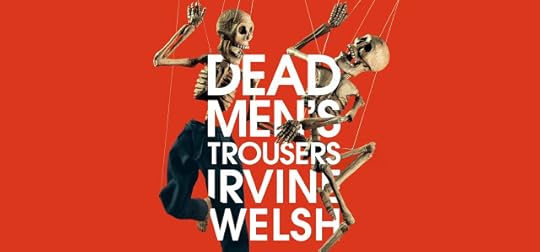
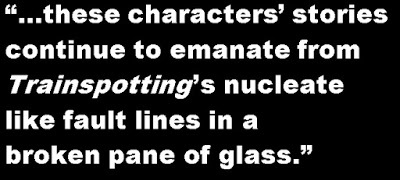 Despite its blurb’s promise of death for one of Welsh’s famous foursome, Dead Men’s Trousers is by far the most fun book in the series. The whole affair is infused with a playful sense of absurdity that gives it an even more heightened feel than the preceding volumes’. We have one character who’s graduated from battering the fuck oot ay cunts to battering the fuck oot ay sculptures; another who’s fallen from casual thievery into the even murkier world of illegal organ-trafficking; a third who’s festive do-badding has backfired dramatically, landing him on a gangster’s speed dial and in a gangster’s debt; and a fourth who finds it impossible to live beholden to a man who’s not only forgiven his betrayal, but actively welcomed the rekindling of their old friendship, all the while living the affluent life of a successful creative that he feels should have been his.
Despite its blurb’s promise of death for one of Welsh’s famous foursome, Dead Men’s Trousers is by far the most fun book in the series. The whole affair is infused with a playful sense of absurdity that gives it an even more heightened feel than the preceding volumes’. We have one character who’s graduated from battering the fuck oot ay cunts to battering the fuck oot ay sculptures; another who’s fallen from casual thievery into the even murkier world of illegal organ-trafficking; a third who’s festive do-badding has backfired dramatically, landing him on a gangster’s speed dial and in a gangster’s debt; and a fourth who finds it impossible to live beholden to a man who’s not only forgiven his betrayal, but actively welcomed the rekindling of their old friendship, all the while living the affluent life of a successful creative that he feels should have been his.“That was meant tae be me!”
The book’s greatest hook is undoubtedly this strange relationship between Renton and the artist formerly known as Begbie. Whereas The Blade Artist gave us a window into the self-styled Jim Francis’ soul, Dead Men’s Trousers gives nothing away – we’re as in the dark as Renton when it comes to Franco’s motivations. By turns terrifying and hilarious, the Beggar Boy toys with his old friend mercilessly, and just when we think we’ve worked out the truth of the punitive mind games being played, Welsh pulls a farcical finale out of his hat that manages to be as uplifting as T2’s was melancholy – and I’m not talking about Hibs winning the Scottish cup.
“I’ve been dragged down a sewer. I only went out for a drink at Christmas!”
Sick Boy’s thread of the narrative is almost as enjoyable, albeit in a much more slapstick way. Renton and Begbie enthral here because each man has changed; one more so than the other, obviously, but each has clearly grown since they were last around each other. Simon David Williamson, however, has not, and Welsh delights in setting the cruel exploiter up for yet another almighty fall. Sick Boy’s limb of the adventure is thus a comic study in comeuppance; a dark sitcom in which a boy who never grew up decides, on a whim, to completely dismantle his brother-in-law’s life, only to realise too late that his own survival hangs upon its reassembly.
Though Sick Boy’s reap-what-he-sows storyline in Dead Men’s Trousers parallels those of his previous outings, its familial setting lends it a very different feel. With him, there’s always the expectation that he will betray, inveigle, entice, corrupt – but this time he plumbs new depths, using those closest to him as his puppets and marks. His sister, nephew and (inevitably gay) son; his risibly benign brother-in-law, Ewan the foot surgeon, whose medical disgrace is sealed as soon as Spud and Mikey Forrester first mention an Eastern European kidney.
“You live until you die, so how do you live?”
In keeping with his downtrodden existence, Spud’s role in Dead Men’s Trousers is overshadowed by those of his three cohorts, and perhaps even Ewan, yet it’s old Danny Boy that serves as the catalyst for the whole novel, both thematically and practically. Without Spud and his daft, kidney-munching mongrel, there would be no Dead Men’s Trousers, and worse still we might still be left nursing the barmy notion that Spud had somehow turned his lifelong pain into profit through the literary ventures that Welsh began to explore in Porno and John Hodge used so bloody rousingly in T2. Instead, the author uses Spud to effectively invert the implications of T2’s stirring dénouement , taking great delight in reminding us all that you can either be a mug or a cunt – and, for all his flaws, Spud’s never been a cunt.
I’ve now followed these four characters from heroin and vinyl though text-messaging and scud and all the way through to neo-liberal Christmases, Tinder, DMT, hashtags (#dickhead) and, inescapably, a dead man’s trousers. Their final outing as a foursome may hang by a delicate thread of coincidence that often beggars belief, but it’s a raucous read that’s unremitting amusement only pauses to rip the heart straight out of you – hopefully in more sanitary conditions than those in which poor Spud’s kidney was removed.
Dead Men’s Trousers is available to download from iTunes’ iBooks Store for £4.99. Amazon offer three different text editions: the original hardcover is currently listed at £11.28 (with free delivery) while the paperback edition is £6.29 (plus delivery for non-Prime members) and the Kindle edition is on par with iBooks at £4.99. The audiobook comes highly recommended - narrator Tam Dean Burn gives more of a performance than a reading. iTunes have it listed for £7.99 while Amazon charge £20.99, though you can get it for free with an Audible trial.
Published on May 02, 2019 15:37
April 10, 2019
Legends of the Dark Knight #3 | Identity Crisis by Brad Meltzer


For a long time I hated the term “graphic novel”. I thought that it felt pretentious, even apologetic, suggesting that comic books are something to be embarrassed about and thus veiled. But then I read acclaimed novelist Brad Meltzer’s controversial 2004 miniseries, Identity Crisis, and came to the realisation that the terminology has, quite rightly, changed along with the product. Every element pathognomonic of a great novel can be found in Meltzer’s Identity Crisis, but instead of being borne of mere words they are given life and dimension by the enticing imagery created by Rags Morales.
For a tale vested with such weight, Identity Crisis begins in a decidedly modest corner of the DC Universe with Ralph Dibny, the recently-outed Elongated Man - or rather his wife Sue, whom he finds brutally murdered. An emotionally wrought superhero version of a police procedural soon ensues, with the Justice League splitting off into factions to pursue their own respective avenues of investigation.

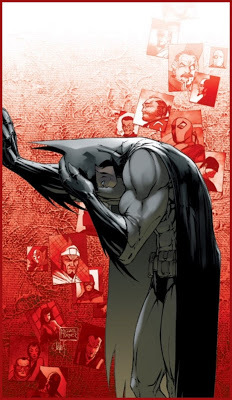 The League’s unease is as palpable as Ralph’s grief - Sue’s death and the events that follow it force its members to consider their own loved ones, and the potential cost should their secret identities ever be exposed. Such fears are thrown into overdrive when they learn that Jean Loring, the Atom’s ex-wife, has also been attacked, with the Tim Drake Robin’s father targeted next. Yet in the background, quiet and persistent, is a nagging sense of disquiet that’s eventually personified in the shape of Wally West. Barry Allen’s successor as the Flash is the key that unlocks the darkest secrets of the Justice League; the veritable lightning bolt that takes the notion of a superhero and briefly illuminates it, before burning it to the ground. Identity Crisis suspends the suspension of disbelief - for a perfect, blazing moment, everything makes sense.
The League’s unease is as palpable as Ralph’s grief - Sue’s death and the events that follow it force its members to consider their own loved ones, and the potential cost should their secret identities ever be exposed. Such fears are thrown into overdrive when they learn that Jean Loring, the Atom’s ex-wife, has also been attacked, with the Tim Drake Robin’s father targeted next. Yet in the background, quiet and persistent, is a nagging sense of disquiet that’s eventually personified in the shape of Wally West. Barry Allen’s successor as the Flash is the key that unlocks the darkest secrets of the Justice League; the veritable lightning bolt that takes the notion of a superhero and briefly illuminates it, before burning it to the ground. Identity Crisis suspends the suspension of disbelief - for a perfect, blazing moment, everything makes sense.Some might question why I’m focusing on a graphic novel that features precious little of the Caped Crusader in a series entitled Legends of the Dark Knight . And, granted, Identity Crisis isn’t a Batman story in the usual sense - the Dark Knight is really only on its periphery as Meltzer’s narrative focuses more heavily on the investigation led by the Green Arrow. Yet Identity Crisis is as much about the Dark Knight as any other Justice League tale. It’s the story that sets him apart from many of his comrades, not just morally but in a very real sense. The devastating reveals of Identity Crisis would ripple back and forth through the DC Universe, setting the stage for future battles while retrospectively making sense of character tension and even the obvious, logical holes that until this story went hand-in-hand with superheroes’ secret identities. This story’s eponymous crisis applies to just about every hero - and many a villain too - but not to Batman. He knows who he is, and it will never change.
 Identity Crisis is available to download from
iTunes’ iBooks Store
for £10.99.
Amazon’sKindle Store
currently has it listed slightly cheaper at £9.94, with the trade paperback the same price as iTunes’ digital edition.
Wordery
is today’s cheapest retailer for the trade paperback, though, offering it for £10.51 inclusive of delivery. All current versions collect together the seven issues from the mini-series along with a selection of Morales’ sketches, the creative team discussing their favourite moments and a detailed dissection of the story by Meltzer and Morales.
Identity Crisis is available to download from
iTunes’ iBooks Store
for £10.99.
Amazon’sKindle Store
currently has it listed slightly cheaper at £9.94, with the trade paperback the same price as iTunes’ digital edition.
Wordery
is today’s cheapest retailer for the trade paperback, though, offering it for £10.51 inclusive of delivery. All current versions collect together the seven issues from the mini-series along with a selection of Morales’ sketches, the creative team discussing their favourite moments and a detailed dissection of the story by Meltzer and Morales.
Published on April 10, 2019 02:37
Legends of the Dark Knight #3| Identity Crisis by Brad Meltzer


For a long time I hated the term “graphic novel”. I thought that it felt pretentious, even apologetic, suggesting that comic books are something to be embarrassed about and thus veiled. But then I read acclaimed novelist Brad Meltzer’s controversial 2004 miniseries, Identity Crisis, and came to the realisation that the terminology has, quite rightly, changed along with the product. Every element pathognomonic of a great novel can be found in Meltzer’s Identity Crisis, but instead of being borne of mere words they are given life and dimension by the enticing imagery created by Rags Morales.
For a tale vested with such weight, Identity Crisis begins in a decidedly modest corner of the DC Universe with Ralph Dibny, the recently-outed Elongated Man - or rather his wife Sue, whom he finds brutally murdered. An emotionally wrought superhero version of a police procedural soon ensues, with the Justice League splitting off into factions to pursue their own respective avenues of investigation.

 The League’s unease is as palpable as Ralph’s grief - Sue’s death and the events that follow it force its members to consider their own loved ones, and the potential cost should their secret identities ever be exposed. Such fears are thrown into overdrive when they learn that Jean Loring, the Atom’s ex-wife, has also been attacked, with the Tim Drake Robin’s father targeted next. Yet in the background, quiet and persistent, is a nagging sense of disquiet that’s eventually personified in the shape of Wally West. Barry Allen’s successor as the Flash is the key that unlocks the darkest secrets of the Justice League; the veritable lightning bolt that takes the notion of a superhero and briefly illuminates it, before burning it to the ground. Identity Crisis suspends the suspension of disbelief - for a perfect, blazing moment, everything makes sense.
The League’s unease is as palpable as Ralph’s grief - Sue’s death and the events that follow it force its members to consider their own loved ones, and the potential cost should their secret identities ever be exposed. Such fears are thrown into overdrive when they learn that Jean Loring, the Atom’s ex-wife, has also been attacked, with the Tim Drake Robin’s father targeted next. Yet in the background, quiet and persistent, is a nagging sense of disquiet that’s eventually personified in the shape of Wally West. Barry Allen’s successor as the Flash is the key that unlocks the darkest secrets of the Justice League; the veritable lightning bolt that takes the notion of a superhero and briefly illuminates it, before burning it to the ground. Identity Crisis suspends the suspension of disbelief - for a perfect, blazing moment, everything makes sense.Some might question why I’m focusing on a graphic novel that features precious little of the Caped Crusader in a series entitled Legends of the Dark Knight . And, granted, Identity Crisis isn’t a Batman story in the usual sense - the Dark Knight is really only on its periphery as Meltzer’s narrative focuses more heavily on the investigation led by the Green Arrow. Yet Identity Crisis is as much about the Dark Knight as any other Justice League tale. It’s the story that sets him apart from many of his comrades, not just morally but in a very real sense. The devastating reveals of Identity Crisis would ripple back and forth through the DC Universe, setting the stage for future battles while retrospectively making sense of character tension and even the obvious, logical holes that until this story went hand-in-hand with superheroes’ secret identities. This story’s eponymous crisis applies to just about every hero - and many a villain too - but not to Batman. He knows who he is, and it will never change.
 Identity Crisis is available to download from
iTunes’ iBooks Store
for £10.99.
Amazon’sKindle Store
currently has it listed slightly cheaper at £9.94, with the trade paperback the same price as iTunes’ digital edition.
Wordery
is today’s cheapest retailer for the trade paperback, though, offering it for £10.51 inclusive of delivery. All current versions collect together the seven issues from the mini-series along with a selection of Morales’ sketches, the creative team discussing their favourite moments and a detailed dissection of the story by Meltzer and Morales.
Identity Crisis is available to download from
iTunes’ iBooks Store
for £10.99.
Amazon’sKindle Store
currently has it listed slightly cheaper at £9.94, with the trade paperback the same price as iTunes’ digital edition.
Wordery
is today’s cheapest retailer for the trade paperback, though, offering it for £10.51 inclusive of delivery. All current versions collect together the seven issues from the mini-series along with a selection of Morales’ sketches, the creative team discussing their favourite moments and a detailed dissection of the story by Meltzer and Morales.
Published on April 10, 2019 02:37
April 9, 2019
Blu-ray Review | Star Trek: The Next Generation - “The Best of Both Worlds” by Michael Piller
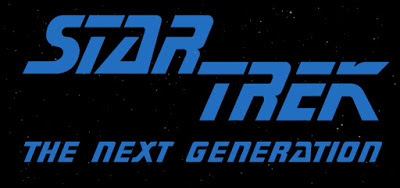 There’s not a more famous cliffhanger in
Star Trek
than that slow, swirling zoom up to Riker’s face as he spits out the command to fire on the Borg - and his former captain. Long before social media, before Trekkies had even claimed the Internet,
Star Trek: The Next Generation
’s (“TNG”) bold decision to leave viewers dangling on a hook over the summer of 1990 was mainstream news. Even today, almost thirty years on, “The Best of Both Worlds” remains much more than a mere fan favourite - it’s a famous piece of television history that set the stall for the longer-running, consequence-based story arcs that keep the flame of the franchise burning hotter than ever today.
There’s not a more famous cliffhanger in
Star Trek
than that slow, swirling zoom up to Riker’s face as he spits out the command to fire on the Borg - and his former captain. Long before social media, before Trekkies had even claimed the Internet,
Star Trek: The Next Generation
’s (“TNG”) bold decision to leave viewers dangling on a hook over the summer of 1990 was mainstream news. Even today, almost thirty years on, “The Best of Both Worlds” remains much more than a mere fan favourite - it’s a famous piece of television history that set the stall for the longer-running, consequence-based story arcs that keep the flame of the franchise burning hotter than ever today. “We have engaged the Borg.”
“We have engaged the Borg.”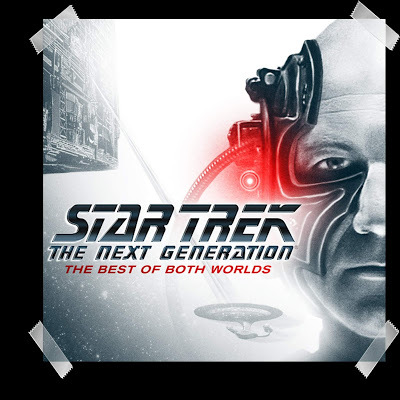 Given its reputation, it’s not at all surprising that CBS released “The Best of Both Worlds” as a stand-alone Blu-ray in addition to its episodes’ inclusion in their respective seasons’ box sets. An obvious temptation for the casual viewer who doesn’t intend to purchase complete seasons on Blu-ray, as well as a must for the completists who do, by all rights this release should have helped the studio to claw back a good chunk of what they laid out on TNG’s historic remastering project. The fact that it didn’t is more attributable to timing and presentation than it is the quality of the disc itself, which might well be the apotheosis of the range in terms of its content. But offering up that content in between two (at the time) very expensive box sets, and in nothing but a cheap Amaray case clad in flimsy cardboard, proved to be a significant mistake. Its poor sales killed the off-season Blu-rays in the UK altogether - I had to pay to import “Redemption”, “Unification”, “Chain of Command” and “All Good Things...” from the US, and even over there the series’ remaining two-parters never made it to press. It’s a crying shame, as no doubt a well-marketed, beautifully designed and better scheduled steelbook or filmbook would have fared significantly better - particularly if it had also included the original episodes alongside this disc’s feature-length cut and perhaps even its cathartic follow-up, “Family”.
Given its reputation, it’s not at all surprising that CBS released “The Best of Both Worlds” as a stand-alone Blu-ray in addition to its episodes’ inclusion in their respective seasons’ box sets. An obvious temptation for the casual viewer who doesn’t intend to purchase complete seasons on Blu-ray, as well as a must for the completists who do, by all rights this release should have helped the studio to claw back a good chunk of what they laid out on TNG’s historic remastering project. The fact that it didn’t is more attributable to timing and presentation than it is the quality of the disc itself, which might well be the apotheosis of the range in terms of its content. But offering up that content in between two (at the time) very expensive box sets, and in nothing but a cheap Amaray case clad in flimsy cardboard, proved to be a significant mistake. Its poor sales killed the off-season Blu-rays in the UK altogether - I had to pay to import “Redemption”, “Unification”, “Chain of Command” and “All Good Things...” from the US, and even over there the series’ remaining two-parters never made it to press. It’s a crying shame, as no doubt a well-marketed, beautifully designed and better scheduled steelbook or filmbook would have fared significantly better - particularly if it had also included the original episodes alongside this disc’s feature-length cut and perhaps even its cathartic follow-up, “Family”.What the disc does contain, though, is a spectacularly remastered ninety-minute movie painstakingly created from the original two-parter’s 35mm film elements. Buoyed by a new 7.1 surround sound mix, you could be forgiven for thinking that the thirty-year-old programme was made this year; only the tell-tale black bars pillarboxing the 4:3 frame betray the programme’s age. It’s an overpowering visual and aural feast that milks the BD-50 format for all that it’s worth.

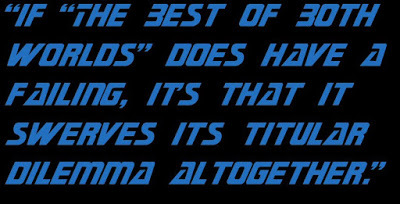 Even on the umpteenth viewing, “The Best of Both Worlds” doesn’t disappoint. Watching it in stunning 1080p on this disc is like watching it again for the first time, particularly for me, as the last time I watched it was in 2003 when it was released on DVD. Watching this Blu-ray, I realised that my memory of the story has been subtly subverted over the years by that infamous, iconic image of Picard as Locutus of Borg that adorns this release’s slipcase. Despite his poster-boy (poster-Borg?) status, this isn’t actually a story about the captain at all - though it’s certainly about captaincy. Picard’s story is actually what follows - this two-parter may document one of his defining ordeals, but it’s only in episodes such as “Family” and “I, Borg”, as well as Star Trek: First Contact, that this is properly probed - Locutus of Borg is nothing but prologue to all that. No, this two-parter, as boldly declared by its title, is all about Commander William T Riker and his inability to reconcile his long-held ambition to captain a starship with his longing to remain on board the Enterprise-D.
Even on the umpteenth viewing, “The Best of Both Worlds” doesn’t disappoint. Watching it in stunning 1080p on this disc is like watching it again for the first time, particularly for me, as the last time I watched it was in 2003 when it was released on DVD. Watching this Blu-ray, I realised that my memory of the story has been subtly subverted over the years by that infamous, iconic image of Picard as Locutus of Borg that adorns this release’s slipcase. Despite his poster-boy (poster-Borg?) status, this isn’t actually a story about the captain at all - though it’s certainly about captaincy. Picard’s story is actually what follows - this two-parter may document one of his defining ordeals, but it’s only in episodes such as “Family” and “I, Borg”, as well as Star Trek: First Contact, that this is properly probed - Locutus of Borg is nothing but prologue to all that. No, this two-parter, as boldly declared by its title, is all about Commander William T Riker and his inability to reconcile his long-held ambition to captain a starship with his longing to remain on board the Enterprise-D. “Mr Worf… Fire!”
“Mr Worf… Fire!”This is in no way a bad thing, though, as the contradiction right at the heart of the Enterprise’s supposedly ambitious first officer needed to be addressed, and bringing in a driven young woman like Commander Shelby to force the issue was a real stroke of genius on writer Michael Piller’s part. With hindsight, it’s a pity they couldn’t have let the Riker / Shelby rivalry play out over a longer period, but “The Best of Both Worlds” was already pushing the envelope in terms of what a weekly syndicated show could get away with. Not putting all the toys back in the box at the end of “Sins of the Father” was contentious enough; Locutus of Borg and a summer of suspense had to be the show’s line in the sand.
 Above: Where does saviour of the world Will Riker’s fourth pip go?
Above: Where does saviour of the world Will Riker’s fourth pip go?If “The Best of Both Worlds” does have a failing, it’s that it swerves its titular dilemma altogether. Whilst becoming captain of the Enterprise is the best of both worlds for Picard’s long-serving number one, albeit in the most twisted and nightmarish of ways, his tenure in the big chair is short-lived. In fact, by the start of the next episode he has been demoted back to the rank commander and resumed his former duties. No explanation is offered for Riker’s reduced rank, which is particularly bizarre both within the fiction and without. Narratively, this is the man who has just saved the Earth, if not the entire Federation, from a fate worse than death, while on a production level “Family” would be the first episode in the entire franchise to be charged with addressing the fallout from the preceding story. As such, eschewing Riker’s unfinished story in favour of less pressing (but wonderful and worthwhile) side-steps for Worf and Wesley Crusher seems downright mad.
 “Death is irrelevant.”
“Death is irrelevant.”Such qualms are paltry, though, when we consider everything that “The Best of Both Worlds” does so very well. Whilst they’ve looked far more fearsome since their silver-screen makeover in Star Trek: First Contact, the Borg have never been more terrifying than they are in this story. When writing the first episode, Piller - who at that point didn’t expect to be penning the second part - deliberately presented them as an unstoppable foe; a relentless force of nature capable of defeating the entire United Federation of Planets and its allies with just a single ship. Upon this, he then layered an unsettling new idea – that the Borg aren’t just interested in assimilating our culture, but our bodies too. Sci-fi meets horror in a sickening fusion of technology and flesh.

Piller’s first episode is a study in suspense, and even today holds up amongst the most tense of season finales. The script builds and builds and builds, underlined throughout by an unsettling and occasionally bombastic score from Ron Jones (DuckTales, Family Guy) that calls to mind John Williams’ renowned work on Star Wars - and not just in its louder moments. The disquieting melodies accompanying Admiral Hanson’s transmissions from Wolf 359, for instance, are seared into my mind as clearly as any piece of incidental music that I’ve ever heard. It helps, of course, that over the top of them Patrick Stewart is giving one of his finest and most understated performances as Picard quietly gives the necessary orders. His clipped, quiet commands tell the viewers everything that they need to know.

Indeed, what makes the episode so very effective is its cast’s delivery of the script, which is - quite deliberately - off-kilter. Riker’s mind is as much on his career as it is the Borg threat, while Picard is unusually quiet and brooding; he even calmly contemplates the fall of humanity with Whoopi Goldberg’s Guinan as he carries out his “traditional” pre-battle inspection of the ship. Even the bridge crew aren’t themselves, fighting fear and fatigue, as so wonderfully demonstrated by what may be either Wil Wheaton’s best or worst delivery of a line on the show, depending on whether you view it as wooden or so perfect a portrayal of fatigue that it just seems that way. Taken together, the performances all help to sell the stakes - this isn’t any old forty-five-minute runaround; this is the big one.
 “Almost human, with just a bit of a headache.”
“Almost human, with just a bit of a headache.” And despite all the odds against it, the fourth-season opener manages to maintain the tension and even escalate matters before resolving the plot in a manner that’s incredibly neat - and incredibly Star Trek. Piller manages to sell the sheer horror of the Wolf 359 massacre without showing a single shot being fired, while somehow conveying the utter loss of self that Picard suffers without having to rely on the sort of shock tactics that Star Trek: Voyager often would in its subsequent Borg stories. Yes, Picard’s line, “Almost human, with just a bit of a headache,” might have had more impact were he staring at the ruined stump of an arm instead of an oversized (and faintly ridiculous) mechanical glove, but I wouldn’t really be wanting to watch that with my kids.
 Above: Regeneration: Engaging the Borg - the documentary that got away
Above: Regeneration: Engaging the Borg - the documentary that got awayThe release also includes an exclusive in-depth retrospective documentary that picks up where the third season box set’s left off, no doubt to the chagrin of those who only purchased the complete seasons. It’s a fascinating piece that, if anything, feels short at half an hour, though inevitably it rehearses much of what is said in the entertaining commentary track featuring director Cliff Bole alongside the Okudas and Shelby actress Elizabeth Dennehy. The bonus material is then fleshed out with a generous - and surprisingly funny - selection of high-definition out-takes culled from the original film as well both episodes’ 1990 trailers, both of which manage to make their respective episodes look terrible - quite an achievement, really.

“The Best of Both Worlds”, whilst far from the archetypal Star Trek small-scale morality play, is nonetheless one of the most - if not the most - thrilling story in the franchise. It famously bridged two of Star Trek: The Next Generation’s most memorable seasons, and while this release omits its defining cliffhanger, it presents “The Best of Both Worlds” in what is surely now its definitive form. A must.
“The Best of Both Worlds” movie is available on Blu-ray, with today’s cheapest retailer being Zoom , who have it listed for £8.00 inclusive of delivery, though eBay sellers often have it listed for half that price.
Published on April 09, 2019 10:16
Blu-ray Review | Star Trek: The Next Generation - “The Best of Both Worlds” by Michael Pillar
 There’s not a more famous cliffhanger in
Star Trek
than that slow, swirling zoom up to Riker’s face as he spits out the command to fire on the Borg - and his former captain. Long before social media, before Trekkies had even claimed the Internet,
Star Trek: The Next Generation
’s (“TNG”) bold decision to leave viewers dangling on a hook over the summer of 1990 was mainstream news. Even today, almost thirty years on, “The Best of Both Worlds” remains much more than a mere fan favourite - it’s a famous piece of television history that set the stall for the longer-running, consequence-based story arcs that keep the flame of the franchise burning hotter than ever today.
There’s not a more famous cliffhanger in
Star Trek
than that slow, swirling zoom up to Riker’s face as he spits out the command to fire on the Borg - and his former captain. Long before social media, before Trekkies had even claimed the Internet,
Star Trek: The Next Generation
’s (“TNG”) bold decision to leave viewers dangling on a hook over the summer of 1990 was mainstream news. Even today, almost thirty years on, “The Best of Both Worlds” remains much more than a mere fan favourite - it’s a famous piece of television history that set the stall for the longer-running, consequence-based story arcs that keep the flame of the franchise burning hotter than ever today. “We have engaged the Borg.”
“We have engaged the Borg.” Given its reputation, it’s not at all surprising that CBS released “The Best of Both Worlds” as a stand-alone Blu-ray in addition to its episodes’ inclusion in their respective seasons’ box sets. An obvious temptation for the casual viewer who doesn’t intend to purchase complete seasons on Blu-ray, as well as a must for the completists who do, by all rights this release should have helped the studio to claw back a good chunk of what they laid out on TNG’s historic remastering project. The fact that it didn’t is more attributable to timing and presentation than it is the quality of the disc itself, which might well be the apotheosis of the range in terms of its content. But offering up that content in between two (at the time) very expensive box sets, and in nothing but a cheap Amaray case clad in flimsy cardboard, proved to be a significant mistake. Its poor sales killed the off-season Blu-rays in the UK altogether - I had to pay to import “Redemption”, “Unification”, “Chain of Command” and “All Good Things...” from the US, and even over there the series’ remaining two-parters never made it to press. It’s a crying shame, as no doubt a well-marketed, beautifully designed and better scheduled steelbook or filmbook would have fared significantly better - particularly if it had also included the original episodes alongside this disc’s feature-length cut and perhaps even its cathartic follow-up, “Family”.
Given its reputation, it’s not at all surprising that CBS released “The Best of Both Worlds” as a stand-alone Blu-ray in addition to its episodes’ inclusion in their respective seasons’ box sets. An obvious temptation for the casual viewer who doesn’t intend to purchase complete seasons on Blu-ray, as well as a must for the completists who do, by all rights this release should have helped the studio to claw back a good chunk of what they laid out on TNG’s historic remastering project. The fact that it didn’t is more attributable to timing and presentation than it is the quality of the disc itself, which might well be the apotheosis of the range in terms of its content. But offering up that content in between two (at the time) very expensive box sets, and in nothing but a cheap Amaray case clad in flimsy cardboard, proved to be a significant mistake. Its poor sales killed the off-season Blu-rays in the UK altogether - I had to pay to import “Redemption”, “Unification”, “Chain of Command” and “All Good Things...” from the US, and even over there the series’ remaining two-parters never made it to press. It’s a crying shame, as no doubt a well-marketed, beautifully designed and better scheduled steelbook or filmbook would have fared significantly better - particularly if it had also included the original episodes alongside this disc’s feature-length cut and perhaps even its cathartic follow-up, “Family”.What the disc does contain, though, is a spectacularly remastered ninety-minute movie painstakingly created from the original two-parter’s 35mm film elements. Buoyed by a new 7.1 surround sound mix, you could be forgiven for thinking that the thirty-year-old programme was made this year; only the tell-tale black bars pillarboxing the 4:3 frame betray the programme’s age. It’s an overpowering visual and aural feast that milks the BD-50 format for all that it’s worth.

 Even on the umpteenth viewing, “The Best of Both Worlds” doesn’t disappoint. Watching it in stunning 1080p on this disc is like watching it again for the first time, particularly for me, as the last time I watched it was in 2003 when it was released on DVD. Watching this Blu-ray, I realised that my memory of the story has been subtly subverted over the years by that infamous, iconic image of Picard as Locutus of Borg that adorns this release’s slipcase. Despite his poster-boy (poster-Borg?) status, this isn’t actually a story about the captain at all - though it’s certainly about captaincy. Picard’s story is actually what follows - this two-parter may document one of his defining ordeals, but it’s only in episodes such as “Family” and “I, Borg”, as well as Star Trek: First Contact, that this is properly probed - Locutus of Borg is nothing but prologue to all that. No, this two-parter, as boldly declared by its title, is all about Commander William T Riker and his inability to reconcile his long-held ambition to captain a starship with his longing to remain on board the Enterprise-D.
Even on the umpteenth viewing, “The Best of Both Worlds” doesn’t disappoint. Watching it in stunning 1080p on this disc is like watching it again for the first time, particularly for me, as the last time I watched it was in 2003 when it was released on DVD. Watching this Blu-ray, I realised that my memory of the story has been subtly subverted over the years by that infamous, iconic image of Picard as Locutus of Borg that adorns this release’s slipcase. Despite his poster-boy (poster-Borg?) status, this isn’t actually a story about the captain at all - though it’s certainly about captaincy. Picard’s story is actually what follows - this two-parter may document one of his defining ordeals, but it’s only in episodes such as “Family” and “I, Borg”, as well as Star Trek: First Contact, that this is properly probed - Locutus of Borg is nothing but prologue to all that. No, this two-parter, as boldly declared by its title, is all about Commander William T Riker and his inability to reconcile his long-held ambition to captain a starship with his longing to remain on board the Enterprise-D. “Mr Worf… Fire!”
“Mr Worf… Fire!”This is in no way a bad thing, though, as the contradiction right at the heart of the Enterprise’s supposedly ambitious first officer needed to be addressed, and bringing in a driven young woman like Commander Shelby to force the issue was a real stroke of genius on writer Michael Pillar’s part. With hindsight, it’s a pity they couldn’t have let the Riker / Shelby rivalry play out over a longer period, but “The Best of Both Worlds” was already pushing the envelope in terms of what a weekly syndicated show could get away with. Not putting all the toys back in the box at the end of “Sins of the Father” was contentious enough; Locutus of Borg and a summer of suspense had to be the show’s line in the sand.
 Above: Where does saviour of the world Will Riker’s fourth pip go?
Above: Where does saviour of the world Will Riker’s fourth pip go?If “The Best of Both Worlds” does have a failing, it’s that it swerves its titular dilemma altogether. Whilst becoming captain of the Enterprise is the best of both worlds for Picard’s long-serving number one, albeit in the most twisted and nightmarish of ways, his tenure in the big chair is short-lived. In fact, by the start of the next episode he has been demoted back to the rank commander and resumed his former duties. No explanation is offered for Riker’s reduced rank, which is particularly bizarre both within the fiction and without. Narratively, this is the man who has just saved the Earth, if not the entire Federation, from a fate worse than death, while on a production level “Family” would be the first episode in the entire franchise to be charged with addressing the fallout from the preceding story. As such, eschewing Riker’s unfinished story in favour of less pressing (but wonderful and worthwhile) side-steps for Worf and Wesley Crusher seems downright mad.
 “Death is irrelevant.”
“Death is irrelevant.”Such qualms are paltry, though, when we consider everything that “The Best of Both Worlds” does so very well. Whilst they’ve looked far more fearsome since their silver-screen makeover in Star Trek: First Contact, the Borg have never been more terrifying than they are in this story. When writing the first episode, Pillar - who at that point didn’t expect to be penning the second part - deliberately presented them as an unstoppable foe; a relentless force of nature capable of defeating the entire United Federation of Planets and its allies with just a single ship. Upon this, he then layered an unsettling new idea – that the Borg aren’t just interested in assimilating our culture, but our bodies too. Sci-fi meets horror in a sickening fusion of technology and flesh.

Pillar’s first episode is a study in suspense, and even today holds up amongst the most tense of season finales. The script builds and builds and builds, underlined throughout by an unsettling and occasionally bombastic score from Ron Jones (DuckTales, Family Guy) that calls to mind John Williams’ renowned work on Star Wars - and not just in its louder moments. The disquieting melodies accompanying Admiral Hanson’s transmissions from Wolf 359, for instance, are seared into my mind as clearly as any piece of incidental music that I’ve ever heard. It helps, of course, that over the top of them Patrick Stewart is giving one of his finest and most understated performances as Picard quietly gives the necessary orders. His clipped, quiet commands tell the viewers everything that they need to know.

Indeed, what makes the episode so very effective is its cast’s delivery of the script, which is - quite deliberately - off-kilter. Riker’s mind is as much on his career as it is the Borg threat, while Picard is unusually quiet and brooding; he even calmly contemplates the fall of humanity with Whoopi Goldberg’s Guinan as he carries out his “traditional” pre-battle inspection of the ship. Even the bridge crew aren’t themselves, fighting fear and fatigue, as so wonderfully demonstrated by what may be either Wil Wheaton’s best or worst delivery of a line on the show, depending on whether you view it as wooden or so perfect a portrayal of fatigue that it just seems that way. Taken together, the performances all help to sell the stakes - this isn’t any old forty-five-minute runaround; this is the big one.
 “Almost human, with just a bit of a headache.”
“Almost human, with just a bit of a headache.” And despite all the odds against it, the fourth-season opener manages to maintain the tension and even escalate matters before resolving the plot in a manner that’s incredibly neat - and incredibly Star Trek. Pillar manages to sell the sheer horror of the Wolf 359 massacre without showing a single shot being fired, while somehow conveying the utter loss of self that Picard suffers without having to rely on the sort of shock tactics that Star Trek: Voyager often would in its subsequent Borg stories. Yes, Picard’s line, “Almost human, with just a bit of a headache,” might have had more impact were he staring at the ruined stump of an arm instead of an oversized (and faintly ridiculous) mechanical glove, but I wouldn’t really be wanting to watch that with my kids.
 Above: Regeneration: Engaging the Borg - the documentary that got away
Above: Regeneration: Engaging the Borg - the documentary that got awayThe release also includes an exclusive in-depth retrospective documentary that picks up where the third season box set’s left off, no doubt to the chagrin of those who only purchased the complete seasons. It’s a fascinating piece that, if anything, feels short at half an hour, though inevitably it rehearses much of what is said in the entertaining commentary track featuring director Cliff Bole alongside the Okudas and Shelby actress Elizabeth Dennehy. The bonus material is then fleshed out with a generous - and surprisingly funny - selection of high-definition out-takes culled from the original film as well both episodes’ 1990 trailers, both of which manage to make their respective episodes look terrible - quite an achievement, really.

“The Best of Both Worlds”, whilst far from the archetypal Star Trek small-scale morality play, is nonetheless one of the most - if not the most - thrilling story in the franchise. It famously bridged two of Star Trek: The Next Generation’s most memorable seasons, and while this release omits its defining cliffhanger, it presents “The Best of Both Worlds” in what is surely now its definitive form. A must.
“The Best of Both Worlds” movie is available on Blu-ray, with today’s cheapest retailer being Zoom , who have it listed for £8.00 inclusive of delivery, though eBay sellers often have it listed for half that price.
Published on April 09, 2019 10:16
March 20, 2019
Legends of the Dark Knight #2 | Batman: Under the Hood by Judd Winick

The notion that Batman needs a Robin has never really been all that contentious; his first replacement Robin, however, was another matter entirely.
Jason Todd was introduced in the Batman comic in the spring of 1983, and before the year was out he would assume the Robin mantle left vacant by Dick Grayson, who’d become Nightwing and quite literally flown the nest to fight crime in Blüdhaven. Originally conceived as the do-gooding Dick by another name, Crisis on Infinite Earths’ reshaping of the DC Universe would reimagine Jason as a destitute delinquent who meets Batman when he’s caught red-handed trying to steal the tyres from the Batmobile. Reliant on a seemingly endless reservoir of rage instead of acrobatics and athleticism, Jason’s rebellious Robin would challenge readers’ preconceptions – and, more often than not, test their patience - with his cocky attitude and frequent lapses of morality. It’s even implied that he crosses Batman’s sacred red line more than once, killing the criminals that he’s sent to subdue. Whilst I find Jason’s Robin a captivating contrast to the more straight-laced Dick, many readers did not take to the Dark Knight’s even darker sidekick, and these readers made their voices heard when DC offered them the chance to play villain. By a margin of just seventy-two votes, an historic telephone poll decreed that Jason should die at the hands of the Joker.

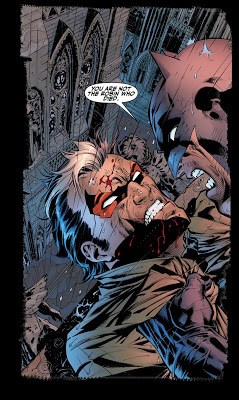 Arguably a fittingly tragic end for a character who could never quite achieve redemption, Jason’s demise in A Death in the Family also added a new dimension to the Batman character. His grief and unprecedented failure would be the catalyst for many an interesting arc going forward, but the cost was that Jason’s journey - be it towards redemption or damnation - would be left incomplete. It would take sixteen years for DC to set matters right with Judd Winick’s acclaimed Under the Hood run in the main Batman title.
Arguably a fittingly tragic end for a character who could never quite achieve redemption, Jason’s demise in A Death in the Family also added a new dimension to the Batman character. His grief and unprecedented failure would be the catalyst for many an interesting arc going forward, but the cost was that Jason’s journey - be it towards redemption or damnation - would be left incomplete. It would take sixteen years for DC to set matters right with Judd Winick’s acclaimed Under the Hood run in the main Batman title.Under the Hood serves a brutal climax to Jason Todd’s story as well as a beautiful coda to Batman’s emotional journey since Jason’s death. Healed by Ra’s al-Ghūl’s Lazarus Pit following Superboy’s rewriting of reality, Jason assumes the mantle of the Red Hood and returns to Gotham bent on doing what Batman cannot - what Batman will not. Winick’s tale is an alluring blend of spectacle, intrigue and misdirection. At no point in the story is the reader absolutely certain of anything - questions of identity, intention and morality lurk beneath every panel. Even the Red Hood’s pragmatic manifesto to conquer and control crime, rather than stop it altogether, is as much a means to an end as it is an end in of itself.
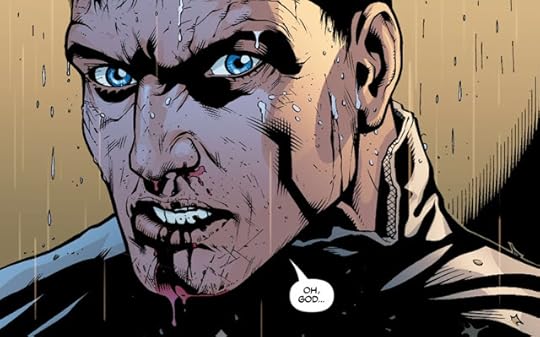
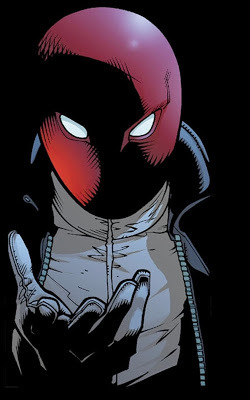 The story’s greatest success is its intelligent handling of the relationship between Jason and Batman, and how it plays so mischievously upon the suppositions that we, as readers, and the World’s Greatest Detective, within the fiction, make about the Red Hood’s beef with the Bat. He failed to save him. He let him die. Yet in a masterstroke of storytelling; a vindication of character traits running two decades deep, Winick reveals what Jason considers to be his former mentor’s great betrayal, and it’s not an act, but a rather startling and obvious omission - at least to Jason. It’s something that perfectly sums up the opposing ideologies driving these two former friends - something that speaks as much to the arguable futility of the Batman as it does the tragedy of Jason Todd.
The story’s greatest success is its intelligent handling of the relationship between Jason and Batman, and how it plays so mischievously upon the suppositions that we, as readers, and the World’s Greatest Detective, within the fiction, make about the Red Hood’s beef with the Bat. He failed to save him. He let him die. Yet in a masterstroke of storytelling; a vindication of character traits running two decades deep, Winick reveals what Jason considers to be his former mentor’s great betrayal, and it’s not an act, but a rather startling and obvious omission - at least to Jason. It’s something that perfectly sums up the opposing ideologies driving these two former friends - something that speaks as much to the arguable futility of the Batman as it does the tragedy of Jason Todd.However, as focused as it is on the central cold war between Batman and his former protégé, Under the Hood also takes the time to develop its other key players. Winick has great fun with Roman Sionis, the Black Mask, as the most powerful man in Gotham’s underworld finds himself suddenly and hilariously impotent; an unwitting pawn in a game that he doesn’t even know is being played. In an expositional epilogue published in the 2006 Batman Annual, “Daedalus and Icarus”, Winick even explores the alluring complexity of Talia al-Ghūl as the tale of Jason’s restoration is firmly rooted in Nanda Parbat and the mystical machinations of the Demon’s Head.
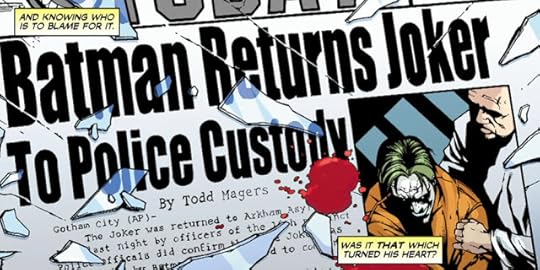
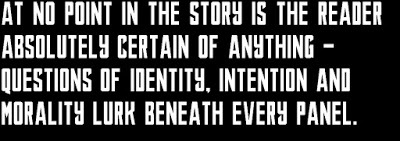 Initially a tight little story concerned with the Red Hood’s no-holds-barred takedown of the Black Mask, events quickly escalate to envelop some of the more outlandish rogues in Batman’s gallery. Deathstroke makes an insanely explosive appearance alongside his lesser-known Secret Society of Supervillains, while Clayface muddies the waters of the mystery and Mr Freeze chills with his hard-hitting home truths. Winick has the Red Hood shake Gotham so hard that seemingly all its villains come scurrying out into light, each desperate to carve out their own place in the new order.
Initially a tight little story concerned with the Red Hood’s no-holds-barred takedown of the Black Mask, events quickly escalate to envelop some of the more outlandish rogues in Batman’s gallery. Deathstroke makes an insanely explosive appearance alongside his lesser-known Secret Society of Supervillains, while Clayface muddies the waters of the mystery and Mr Freeze chills with his hard-hitting home truths. Winick has the Red Hood shake Gotham so hard that seemingly all its villains come scurrying out into light, each desperate to carve out their own place in the new order.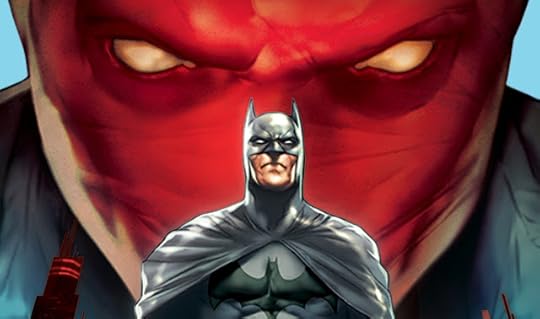
Under the Hood has become such an integral and renowned part of the Batman mythology that in 2010, Winick adapted his story for the DC Animated Original Movies line as Under the Red Hood, which to this day remains one of the series’ greatest commercial and critical successes. Bruce Greenwood (Captain Pike in the 2009 Star Trek movie) spearheads an all-star cast that includes Jensen Ackles (Smallville) and Jason Isaacs ( Star Trek: Discovery ) in an inevitably condensed and toned-down but spiritually faithful adaptation that pays breathtaking homage to the animated series of the early 1990s through its animation. In the few instances where the movie does depart from the story’s key beats, it’s where it seizes the opportunity to break free of the comics’ continuity to enrich the tale. One particularly nice revision is the idea that Batman wasn’t the only one left wallowing in self-recrimination over Jason’s demise - that it left as much of a mark on Ra’s al-Ghūl, the Joker’s on-screen paymaster at the time of Jason’s death, as it did Jason’s mentor.
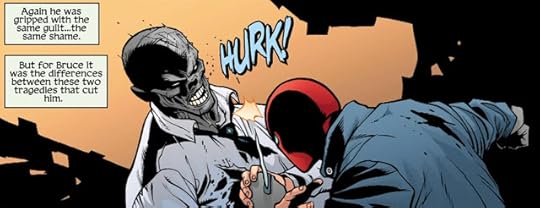
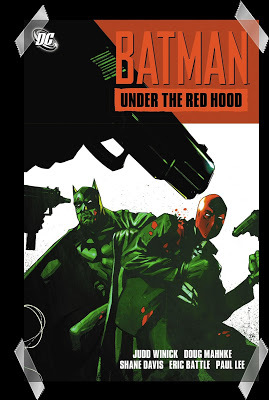 It’s quite apt that Jason Todd was born out of one crisis and resurrected by another as, seemingly, his whole existence is defined by crisis. A tortured soul lost in the crack between hero and villain, Under the Hood makes it easy to believe that Jason was always destined to walk down this dark path. The Lazarus Pit may have drawn out the devil in him, but that red-hooded devil was always there, just waiting for “a most surreal turn of disappointment” to let him loose.
It’s quite apt that Jason Todd was born out of one crisis and resurrected by another as, seemingly, his whole existence is defined by crisis. A tortured soul lost in the crack between hero and villain, Under the Hood makes it easy to believe that Jason was always destined to walk down this dark path. The Lazarus Pit may have drawn out the devil in him, but that red-hooded devil was always there, just waiting for “a most surreal turn of disappointment” to let him loose.The entire Under the Hood run is collected in Batman: Under the Red Hood, which is available to download from iTunes’ iBooks Store for just £3.49 or Amazon’s Kindle Store for £5.45. A trade paperback is also available, with today’s cheapest retailer being Wordery who have it listed for £15.23 inclusive of delivery.
The animated movie Batman: Under the Red Hood is available to download in 1080p from iTunes for £7.99. The iTunes Extras include a memorable Jonah Hex DC Showcase short and in-depth documentaries on Dick Grayson and Jason Todd respectively. The movie has not been released in Blu-ray in the UK, but you can pick up a region-free import relatively cheaply on eBay or in the Amazon Marketplace.
Published on March 20, 2019 13:13
March 1, 2019
TV Review | Titans developed by Akiva Goldsman, Geoff Johns & Greg Berlanti

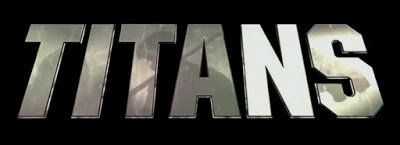 Having come to appreciate comic books much later in life than most, the Teen Titans were never on my radar. However, when I did stumble across them, I was instantly taken by the group’s diverse and complex characters as well as the aberrantly adult themes at play in their stories. Their live-action debut in DC Universe’s inaugural TV series takes these strengths and pushes them to their limits in a short but thrilling season that drops the Teen and embraces the Titan.
Having come to appreciate comic books much later in life than most, the Teen Titans were never on my radar. However, when I did stumble across them, I was instantly taken by the group’s diverse and complex characters as well as the aberrantly adult themes at play in their stories. Their live-action debut in DC Universe’s inaugural TV series takes these strengths and pushes them to their limits in a short but thrilling season that drops the Teen and embraces the Titan. Whilst Titans is not part of the DC Extended Universe (the “DCEU”), artistically it clearly takes its cues from the franchise’s turbulent movie universe. Everything from the score to the colour grading screams out Batman v Superman: Dawn of Justice, but no more so than the season’s cleverly intertwined, character-driven storylines that are every bit as challenging and comic-book reverent as those found in 2016’s underrated powerhouse of a summer blockbuster.
 Developed by the dream team of recent DC president and long-time chief creative officer Geoff Johns (Flashpoint, Infinite Crisis, Batman: Earth One), Akiva Goldsman (
Star Trek: Discovery
) and Arrowverse mastermind Greg Berlanti, Titans’ first season is built around an adult Dick Grayson and a teenage Rachel Roth as they discover each other and their rapidly escalating misadventures lead them to Koriand'r and eventually Gar. It’s a tight and diverse ensemble; one that’s seemingly custom-built for the inclusive sensibilities of today, and more importantly one that sets the stall for stories that transcend genre. From the grit and gore of crime-addled Gotham to the supernatural horror of Raven and comedy sci-fi of Beast Boy, Titans is every bit as eclectic as it is engrossing. While, like the best of today’s event series, the season’s storylines follow an ongoing arc, its episodes are nonetheless discrete little stories - when you hit play, you never know whether you’ll be delving into the murky legacy of the Bat with Dick Grayson; the wacky world of the Doom Patrol with Gar; Kory’s forgotten Tamaranean mission; or Rachel’s chilling past - and even more terrifying present.
Developed by the dream team of recent DC president and long-time chief creative officer Geoff Johns (Flashpoint, Infinite Crisis, Batman: Earth One), Akiva Goldsman (
Star Trek: Discovery
) and Arrowverse mastermind Greg Berlanti, Titans’ first season is built around an adult Dick Grayson and a teenage Rachel Roth as they discover each other and their rapidly escalating misadventures lead them to Koriand'r and eventually Gar. It’s a tight and diverse ensemble; one that’s seemingly custom-built for the inclusive sensibilities of today, and more importantly one that sets the stall for stories that transcend genre. From the grit and gore of crime-addled Gotham to the supernatural horror of Raven and comedy sci-fi of Beast Boy, Titans is every bit as eclectic as it is engrossing. While, like the best of today’s event series, the season’s storylines follow an ongoing arc, its episodes are nonetheless discrete little stories - when you hit play, you never know whether you’ll be delving into the murky legacy of the Bat with Dick Grayson; the wacky world of the Doom Patrol with Gar; Kory’s forgotten Tamaranean mission; or Rachel’s chilling past - and even more terrifying present. 
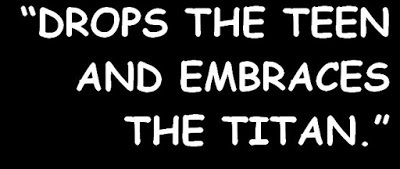 As a Batman nut, inevitably it was the allure of seeing a more mature live-action take on Dick Grayson that drew me to Titans, and Brenton Thwaites does not disappoint in bringing to life a jaded and dangerously violent young man who’s lost somewhere in that fascinating lacuna between Robin and Nightwing. His story in Titans isn’t just a quest for identity, but for belonging too, and pleasingly it’s one that draws heavily on Dick’s development in the comics, albeit with more than a few atypical spins on it.
As a Batman nut, inevitably it was the allure of seeing a more mature live-action take on Dick Grayson that drew me to Titans, and Brenton Thwaites does not disappoint in bringing to life a jaded and dangerously violent young man who’s lost somewhere in that fascinating lacuna between Robin and Nightwing. His story in Titans isn’t just a quest for identity, but for belonging too, and pleasingly it’s one that draws heavily on Dick’s development in the comics, albeit with more than a few atypical spins on it. A case in point is the standout episode “Jason Todd”, which sees Dick encounter Batman’s new sidekick in a tense tale that looks to lay the ghosts of Dick’s childhood to rest while confronting the duality still tearing him in two head-on. Curran Walters is perfect as the ill-fated Robin replacement; his Jason could have been torn straight from the pages of an ’80s comic, were it not for the modernised body armour and misdirected aggression that calls to mind Damian Wayne as much as it does Jason Todd. Yet it’s this cocky, f-bomb dropping little shit that pulls Dick’s inner struggle into sharp focus: How can he say that he’s done with Batman and Robin, only to dust off the red suit whenever duty calls?
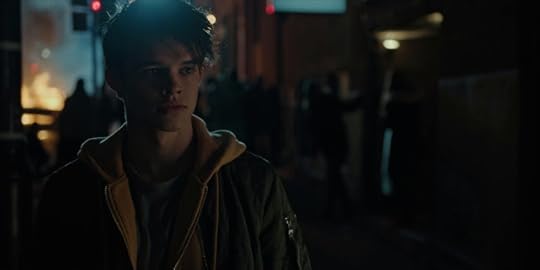
Thwaites’ fellow Home and Away alumnus Teagan Croft is every bit as impressive as Rachel Roth / Raven, whose personal storyline drives the entire season. As with Dick, Titans’ Raven is a largely faithful but utterly grounded take on the character. The darkness within Rachel - her “soul-self”, if you like - is reflected in a sullen, gothic façade that screams teenage angst whilst belying the extent of the rage broiling away inside of her. Yet as the series progresses, and particularly through its depiction of her budding friendship with Gar, her empathic abilities come to the fore and we even see flashes of a “normal” teenager; of a sweet vulnerability often masked by a terrifying and overwhelming power. It’s a carefully constructed, layered rendition of one of DC’s most difficult characters.

Much was made of the casting of Anna Diop (24: Legacy) as Kory / Starfire, and as someone who nearly melted when Doctor Who changed gender, I can at least understand why avid fans take umbrage with changes in the realisation of much-loved characters, if not how they often express their ire. But with Kory, all the show has done is to change the colour of her skin; it’s no more contentious than casting Grant Gustin as dark-haired Barry Allen or having Stephen Amell play a Green Arrow free of that embarrassing bycocket. That’s certainly not to say that a character’s skin colour can’t be inviolate when it’s central to who that character is or what their story represents - within the worlds of DC, having J’onn J’onzz masquerade as a white man just wouldn’t work, for instance - but that is clearly not the case with Starfire. As a character, Kory remains true to the comics in every significant way, and Diop’s playful bad-ass performance is breathtakingly good. Starfire makes Titans pop as effectively as her magenta hair does the ubiquitous grey cinematography. Make no mistake, she’s the face of the series - the image that lingers once you look away from the poster.

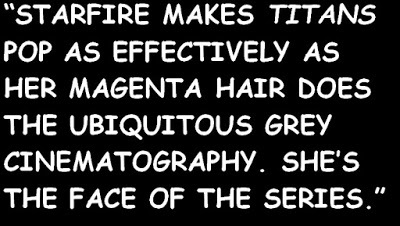 Rounding out the team is Ryan Potter’s (Big Hero 6) Garfield Logan, who brings some much-needed levity to a dark and brooding show, and somehow without undermining the sensitivity and loneliness at the heart of the character. This kid’s a tiger who doesn’t want to have to bite; an awkward, video-game nerd forced to play Titan. And whilst he is still instantly recognisable, Titans’ Gar eschews his traditional green look in favour of the actor’s natural skin tone (a move that, funnily enough, doesn’t seem to have attracted the same level of scorn as Starfire’s less conspicuous change of hue). Gar’s reimagining makes sense to me on a lot of levels, removing a lot of needless obstacles in the storytelling in addition to saving Potter countless hours in the make-up chair. I suspect that it’s also for practical reasons that, at least for now, Beast Boy’s metamorphic powers are limited to assuming the form of a slightly unconvincing tiger. Green Tiger Boy it may be, then, but as green tiger boys go he’s in a league of his own.
Rounding out the team is Ryan Potter’s (Big Hero 6) Garfield Logan, who brings some much-needed levity to a dark and brooding show, and somehow without undermining the sensitivity and loneliness at the heart of the character. This kid’s a tiger who doesn’t want to have to bite; an awkward, video-game nerd forced to play Titan. And whilst he is still instantly recognisable, Titans’ Gar eschews his traditional green look in favour of the actor’s natural skin tone (a move that, funnily enough, doesn’t seem to have attracted the same level of scorn as Starfire’s less conspicuous change of hue). Gar’s reimagining makes sense to me on a lot of levels, removing a lot of needless obstacles in the storytelling in addition to saving Potter countless hours in the make-up chair. I suspect that it’s also for practical reasons that, at least for now, Beast Boy’s metamorphic powers are limited to assuming the form of a slightly unconvincing tiger. Green Tiger Boy it may be, then, but as green tiger boys go he’s in a league of his own. 
The season’s villains are a similarly varied bunch, and, like the Titans, hail from corners of the DC Universe seldom explored in the mainstream. Though only minions of the inevitable, Raven-related big bad, the Nuclear Family make the transition to live action the most effectively, providing the still coming-together Titans with a threat that’s often as silly as it is sinister, though Robin’s mid-season nemesis, Nick Zucco - imagine Two-Face crossed with the Phantom of the Opera - really gives them a run for their money.
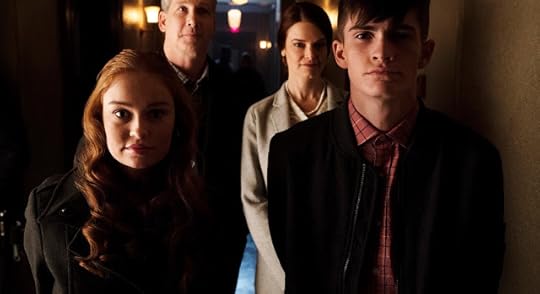
All told, DC Universe’s streaming service could not have had a brighter - well, darker - start than Titans. With the Doom Patrol spin-off series now underway and a second season of Titans in the works, this show is already shaping up to be the bedrock of a fantastic new DC TV universe.
Nevertheless, I still think that DC have missed a trick with Titans and Doom Patrol. Comic book fans love crossovers, as do, it seems, the binge-watchers of tomorrow. But with the apparently divorced DCEU intent on limiting itself to the silver screen, setting itself apart from even the could-have-been Man of Steel prequel, Krypton; the Arrowverse the exclusive preserve of the CW; Black Lightning off doing its own thing, at least for now; and FOX’s soon-to-be-canned Gotham beyond the reach of even the Waverider, DC really need to somehow consolidate their ongoing ventures if they are to garner the same level of viewership and acclaim as the those unified under the banners of Star Wars ; Star Trek ; and, of course, the Marvel Cinematic Universe. Titans’ home service is, after all, named DC Universe - not DC Multiverse.
Whilst DC Universe is not yet available in the UK, the first season of Titans is currently available to stream on Netflix. At the time of writing, there is no official word on when we can expect DC Universe to be available in the UK.
Published on March 01, 2019 13:53
February 21, 2019
Blu-ray Review | Doctor Who: “Resolution” by Chris Chibnall
 It would be a colossal understatement to call 2018
Doctor Who
’s greatest year of change in living memory. A new showrunner, production team, composer, aspect ratio, Sunday-evening slot and even a change of gender were on the cards for the eponymous Time Lord. Yet all these things were as nothing compared to the shock abolition of the show’s “traditional” Christmas special, which for many proved even more ruinous to their revels than the needless letterboxing of half the Beeb’s flagship shows.
It would be a colossal understatement to call 2018
Doctor Who
’s greatest year of change in living memory. A new showrunner, production team, composer, aspect ratio, Sunday-evening slot and even a change of gender were on the cards for the eponymous Time Lord. Yet all these things were as nothing compared to the shock abolition of the show’s “traditional” Christmas special, which for many proved even more ruinous to their revels than the needless letterboxing of half the Beeb’s flagship shows.
Ever since the Doctor was reborn on Christmas Day to fend off “The Christmas Invasion”, a holiday date with the Time Lord has been obligatory - but it has to be said, as the years have rolled on it’s felt more like obligation than tradition. There’s only so many festive tales that you can tell; only so many times you can shoehorn a Santa hat into a tale about a superhero or a killer Christmas tree into a story about a spider and a bride. The time was right to buck the trend, and embrace what I hope will become the next decade’s Doctor Who tradition: beginning the year with a full-throttle, heavyweight spectacular on New Year’s Day.

“Resolution”, written by incumbent showrunner Chris Chibnall, is a Dalek tour de force, introducing the Doctor’s oldest and deadliest enemy to the next generation of viewers with a fusion of psychological and actual horror the likes of which we haven’t seen since Robert Shearman’s effective deconstruction of the Dalek fourteen years ago. Clearly inspired by Mr Shearman’s influential “Dalek” episode, in some ways “Resolution” goes further than even that acclaimed adventure did, focusing heavily on the Dalek creature itself rather than the more commonly relied-upon war machine housing it. Buoyed by Nicholas Briggs’ chilling voice work, Charlotte Ritchie (Call the Midwife) is absolutely phenomenal as the creature’s unwitting human host, Lin, turning from buoyant and lovestruck academic to terrified captive to cold and clinical killer effortlessly.
Ritchie is so very disturbing in her portrayal, in fact, that once the Dalek inevitably completes its casing and emerges in a form close to that we’ve all seen before, it could quite easily have felt anti-climactic. That couldn’t be further from the case, though, as the recycled Dalek makes the most explosive of entrances before going on to decimate a whole platoon of troops. Its bespoke, ramshackle casing is a triumph of design, serving as a metaphor for “Resolution” itself as well as a chilling foe. Instantly recognisable, yet grounded, raw... and unique.
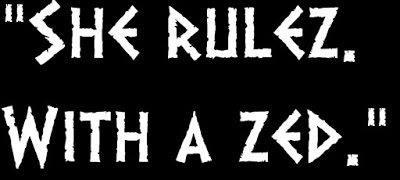 Better still, the sight of a Dalek brings out the very best in Jodie Whittaker’s Doctor. Her first season saw me slowly fall in love with Thirteen, but it wasn’t until she found herself staring down the barrel of a Dalek gunstick that I saw the fire and steel of earlier incarnations finally manifest itself in her. That certainly isn’t to say that Thirteen is a brooding, raging mess in “Resolution” - with her “mad skillz” and “extended fam” she’s every bit her usual quirky and delightful self - the only difference is that here, for the first time in her new body, the Doctor really has to bring it. Well, Chris wrote it and Jodie brought it, and I am now free if any lingering doubts about the Doctor’s change of gender. She rulez. With a zed.
Better still, the sight of a Dalek brings out the very best in Jodie Whittaker’s Doctor. Her first season saw me slowly fall in love with Thirteen, but it wasn’t until she found herself staring down the barrel of a Dalek gunstick that I saw the fire and steel of earlier incarnations finally manifest itself in her. That certainly isn’t to say that Thirteen is a brooding, raging mess in “Resolution” - with her “mad skillz” and “extended fam” she’s every bit her usual quirky and delightful self - the only difference is that here, for the first time in her new body, the Doctor really has to bring it. Well, Chris wrote it and Jodie brought it, and I am now free if any lingering doubts about the Doctor’s change of gender. She rulez. With a zed.The extended fam fare just as well too, even with Lin and Ryan’s dad competing with them for screen time. In full police officer-mode, Yaz is given much to do, and she does it convincingly, while Graham and Ryan find themselves at the thematic heart of the story as they come to terms with the return of Ryan’s estranged dad. Unlike many of the show’s Christmas specials, “Resolution” is an adventure that has all-year-round appeal, but its principal character story is certainly one that fits beautifully with the ushering in of a new year and the turning over of new leaves.
Yet the special is not without its moments of levity. Indeed, given the tension and terror of the piece, they’re bloody vital. All the gags about the boredom of New Year’s Day and the cruelty of shutting off of the nation’s Wi-Fi at such a time are uproarious - “What a monster!” - and the joke about the recently disbanded UNIT’s financial woes successfully builds upon the political commentary of the preceding season in addition to being bold and astute.
Visually, the episode is an unrelenting feast, boasting car chases and shoot-outs which the Blu-ray presents in stunning clarity, albeit within a frustratingly letterboxed frame. Despite its supposedly wider aspect ratio, consumers should bear in mind that the width of the Whittaker era on Blu-ray remains consistent with previous HD seasons (at 1920 pixels) while the height of its picture is actually reduced to allow for letterboxing - you’re actually getting fewer pixels than before. Even if someone puts a 2:1 or 2.35:1 TV out on the market, the best resolution you can hope for from this disc is 1920 x 960 pixels as that’s the height of the active picture within the Blu-ray’s 1080p frame.
Whilst this is almost farcically unfutureproof, the contrast between the murkiness of the sewers and the brightness of Sheffield at midday is so stark that you’d be forgiven for thinking that the disc boasts HDR - something you won’t find on any commercial Blu-ray, sadly. The picture quality is so good, in fact, that when watched at a normal viewing distance on a 49” TV it’s hard to see how it could look any better. Certain shots stand out in particular - the Dalek’s showdown with the military beneath a dusk-pink sky while wind turbines mill away in the background is exquisite. The wrong shape for telly, but exquisite nonetheless.
It’s hard to point to anything more terrifying than a laughing Dalek in the whole canon, and thankfully the disc’s 5.1 soundtrack does it justice. Be it Dalek or human, the dialogue is as clear as the effects and music are arresting. Regrettably though, as seems to be the norm for Who’s off-season Blu-rays (The Complete Specials amongst them), there is no audio description track on offer. As someone who often plays these (if, as is often the case, I’m fannying about doing something else as I “watch”), this is an annoying and perplexing omission - one compounded by the fact that the episode is freely available to stream on iPlayer with audio description, and will remain as such until at least the end of the year.
The disc’s bonus content is similarly disappointing, barely limping past the half-four mark in all and continuing the lightweight EPK feel of The Complete Eleventh Series’ Blu-ray set. I know that I’ve been spoiled by years of incredibly thoughtful and detailed bonus content on the classic series’ DVDs, but even so, there’s no escaping the fact that the Dalek Reformed feature is squarely aimed at kids and/or casual viewers, while the obligatory making-of featurette and pithy Closer Look companion piece reveal little of note. The recap of Series 11 / Season 37 is potentially useful, but for me only highlights the absurdity of releasing “Resolution” separate from The Complete Eleventh Series. There isn’t even a commentary track.
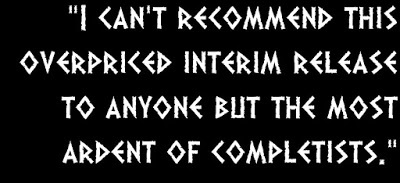 As is evident from the special’s very title, let alone its content, “Resolution” serves as a climax to Thirteen’s first run as much as it does a one-off holiday special. as such, it’s bitterly disappointing that my absolutely stunning Complete Eleventh Series steelbook (it’s one of the most beautiful that I own) now has a cheap and crappy Amaray case beside it on the shelf when “Resolution” should have been the crowning jewel in that collection. It is possible that “Resolution” may be tacked onto the eventual Complete Twelfth Series Blu-ray, as was the practice until “Twice upon a Time” sent collectors into meltdown, but if Peter Capaldi’s swansong couldn’t find its way onto his final box set, I don’t hold out much hope. Either way, a “Resolution” steelbook would have been a welcome compromise - especially given this disc’s bonkers £25.52 RRP, which is only a few quid shy of what I recently paid for the limited-edition 4K UHD steelbook edition of The Avengers: Infinity War.
As is evident from the special’s very title, let alone its content, “Resolution” serves as a climax to Thirteen’s first run as much as it does a one-off holiday special. as such, it’s bitterly disappointing that my absolutely stunning Complete Eleventh Series steelbook (it’s one of the most beautiful that I own) now has a cheap and crappy Amaray case beside it on the shelf when “Resolution” should have been the crowning jewel in that collection. It is possible that “Resolution” may be tacked onto the eventual Complete Twelfth Series Blu-ray, as was the practice until “Twice upon a Time” sent collectors into meltdown, but if Peter Capaldi’s swansong couldn’t find its way onto his final box set, I don’t hold out much hope. Either way, a “Resolution” steelbook would have been a welcome compromise - especially given this disc’s bonkers £25.52 RRP, which is only a few quid shy of what I recently paid for the limited-edition 4K UHD steelbook edition of The Avengers: Infinity War.And so whilst “Resolution” is the series’ strongest special since its anniversary year, I can’t recommend this overpriced interim release to anyone but the most ardent of completists, and even they might be better advised to hedge their bets and wait to see if it’s going to appear on The Complete Twelfth Series set before taking the plunge, by which time its price should have plummeted. Sticklers for quality who can’t put up with iPlayer’s 720p in the meantime would be better served purchasing the 1080p episode from iTunes for a much more proportionate £3.99. iTunes actually offers more bonus material than the Blu-ray does - not that any of the additional iTunes-exclusive features make for particularly fascinating viewing, mind. Yuletide greetings and a 2019 countdown from the cast round out a lacklustre assortment of pithy, pluggy “special” features that are more in keeping with the £1.50 uplift applied to the £2.49 digital episode than they are an exorbitantly priced Blu-ray release.
“Resolution” is now available to buy on Blu-ray, with today’s cheapest retailer being Zoom , who have it listed for £17.99 with free delivery.
“Resolution” is also available to download from iTunes in 1080p HD for just £3.99. This release includes all the bonus material on the Blu-ray release and more besides. Amazon Instant Video have it listed for the same price, but I can’t speak as to what (if any) bonus material is included.
“Resolution” will also be streaming on iPlayer until 31st December 2019.
Published on February 21, 2019 12:07
February 16, 2019
Legends of the Dark Night #1 | Batman v Superman: Dawn of Justice directed by Zack Snyder

Initially high-grossing but critically slammed, Batman v Superman: Dawn of Justice (“BvS”) certainly did not live up to the lofty expectations that Warner Bros and DC Entertainment had pinned on it. In an undisguised (and ill-advised) attempt to play catch-up with the Disney-backed Marvel Studios, the Man of Steel sequel was charged with the impossible task of laying the foundations for the nascent DC Extended Universe (“DCEU”) in a movie that, by its very nature, couldn’t be anything but climactic. Warner Bros wanted an instant answer to The Avengers; instead, what they got was described as “bat-shit crazy” - and those were the people being kind.
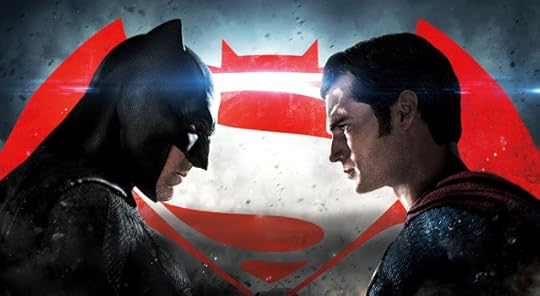
Yet Zack Snyder’s blockbuster - at least when considered in isolation and, crucially, in its elongated “ultimate edition” form - still finds itself amongst my favourite comic-book movies. Whilst its timing and ambition speak to spectacular errors of judgement on an executive level, the film itself combines a thoughtful and challenging character-driven story with a number of exceedingly well-executed set pieces truly worthy of all the hype. The script from Chris Terrio (Justice League, Star Wars: Episode IX) and David S Goyer (The Dark Knight trilogy) draws from some of the most celebrated and revered titles in the vast DC library (particularly The Death of Superman, Tower of Babel and The Dark Knight Returns), but presents them in a way that feels entirely grounded. This is a world that, even after the extra-terrestrial incursion of Man of Steel, feels excruciatingly true to life. Indeed, to its credit, BvS is as much a gripping political drama as it is “two dolls being smashed into each other”. The brewing climate of anger and fear is terrifyingly plausible, and BvS does a terrific job in fleshing this out through well-drawn characters like Holly Hunter’s Senator Finch and Scoot McNairy’s Wallace Keefe, as well as, of course, Batman.
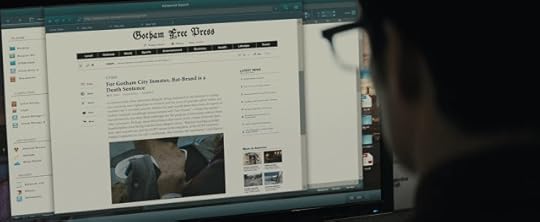
In most of his many iterations, the Dark Night has been a vigilante rather than a hero. The two things aren’t mutually exclusive, of course, but in his heart Batman has dedicated his life to warring on criminals - any perceived heroism is secondary to that. In BvS, though, he allows his experience and cynicism to extend the scope of his increasingly violent remit beyond vigilantism in Gotham. No longer content with branding the villains that he torments, he looks to wage a pre-emptive war against a potential threat greater than any mankind has ever faced before: the Superman.
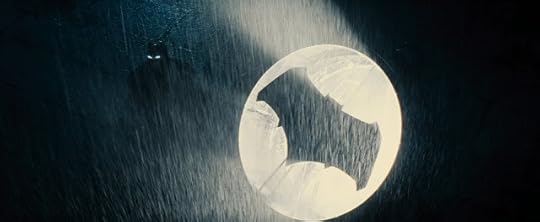
Ben Affleck is absolutely superb as the ageing and grizzled Dark Knight - his interpretation is certainly the closest that we’ve ever come to the Batman of Frank Miller’s seminal Dark Knight Returns, at least in live action. As much as I love Christian Bale’s version, to me that represents the definitive cinematic take on the young Caped Crusader; a culmination of years spent revelling in Year One, The Long Hallowe’en and the like. Affleck’s Batman, whilst visibly a little younger than The Dark Knight Returns’, has nailed the other end of the timeline. Weary and weathered, and having already lost at least one Robin (and not necessarily the one you’d think, if the director’s intentions still carry any weight) in his crusade, this Batman is very much the hulking mass of disillusionment that Miller so thrillingly took and re-instilled with purpose. BvS sends him on a thematically similar journey, albeit one that’s subverted - perhaps even inverted - by the movie’s central moral quandary.

 What is a hero? What gives them the right to do what they do? To decide who lives, and who dies? The same, essential deconstruction of the genre that took The Dark Night Returns to mainstream notoriety in 1986 beats just as powerfully at the heart of BvS. The world of this film is intent on reining in the Superman; on turning him into a super-soldier whose heroism will only be sanctioned where it has a government mandate. As a viewer, we know the unwavering moral boy scout that Clark Kent is; we trust him implicitly. But in the real world, would we want a God-like being wielding such power without a net? Surely we would want to impose a system of balances and checks on that being? Might we even share the views of Lex Luthor and Batman, who believe in having an effective deterrent against such a being abusing his great power?
What is a hero? What gives them the right to do what they do? To decide who lives, and who dies? The same, essential deconstruction of the genre that took The Dark Night Returns to mainstream notoriety in 1986 beats just as powerfully at the heart of BvS. The world of this film is intent on reining in the Superman; on turning him into a super-soldier whose heroism will only be sanctioned where it has a government mandate. As a viewer, we know the unwavering moral boy scout that Clark Kent is; we trust him implicitly. But in the real world, would we want a God-like being wielding such power without a net? Surely we would want to impose a system of balances and checks on that being? Might we even share the views of Lex Luthor and Batman, who believe in having an effective deterrent against such a being abusing his great power?
The irony is that The Dark Knight Returns’ Superman is, superficially at least, everything that BvS wants him to be - he’s the last of the superheroes, a government enforcer on a presidential leash who’s tasked with ending the terror of Dark Knight come again. In BvS, though, it’s Superman’s who’s the subject of public scrutiny and Batman who takes it upon himself to protect his planet from carnage of the like depicted in Man of Steel. Miller’s questions still burn just as fiercely, though, and it is in how it deals with them that BvS triumphs.
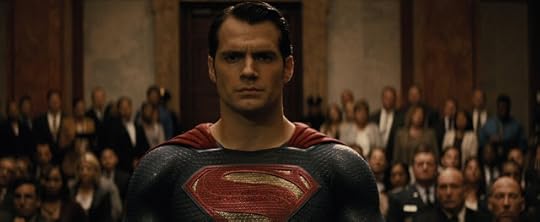
I didn’t like Man of Steel at the time of its release, and I’m still not all that keen on it today, but my issues with it were borne more of tone and structure than they were the eponymous Man of Steel himself. My only real complaint in that regard was that Henry Cavill wasn’t Smallville’s Tom Welling - after a decade of anticipation, there was only one man I wanted to see doing flights in tights. But despite not having ten seasons’ back story propping him up and having surrendered his top billing to the Bat, BvS still gives Cavill some wonderful material to sink his teeth into. His scenes with Amy Adams’ Lois are particularly lovely, and he really shows his steel in his scenes with Affleck; their first meeting at Luthor’s is goosebumps-good. Best of all though are the crushing moments when Cavill’s face betrays that it isn’t kryptonite that’s his real Archilles heel, but his love for his Lois and his mother. Cavill’s rendition might not be anything close to the definitive take on the legendary pop-culture staple, but his stoic turn in this movie is almost on a par with Affleck’s.

One surprising facet of the film is its portrayal of Lex Luthor, which is hard to measure against any of his recent antecedents in print or on screen. The character’s background and ambition to defend the world from alien aggressors no matter the cost might seem familiar, but Jesse Eisenberg’s performance is typified by a frightening eccentricity that’s light years from Michael Rosenbaum’s cool resolve in Smallville. Lex’s rambling digression at his LexCorp gala highlight the character’s fragile grip on sanity - he’s so intelligent, so obsessed, so fanatical that he can’t even keep his mask from slipping when addressing his guests. It’s a fresh and disquieting rendition of a done-to-death villain; one that’s almost as memorable as Ben Affleck’s Batman - or Gal Gadot’s Wonder Woman.

As the gateway into the coalescing DCEU, BvS - perhaps more aptly abbreviated to “Dawn of Justice” here - is also responsible for the introduction of Diana Prince / Wonder Woman as well as other future Justice League members, all of whom make their live-action theatrical debuts. Of course, Gadot’s Wonder Woman has met with universal acclaim, stealing almost all of the little praise that this movie garnered before conquering the world in Patty Jenkins’ mould-breaking Wonder Woman the following year. Her introduction in Dawn of Justice is executed flawlessly, turning mystery to impact without taking anything away from the movie’s two titular antagonists (though she does get by far the coolest theme). In fact, Diana shines a light on their respective virtues and ultimately proves to be the glue that binds them. It’s particularly gratifying to see her help showcase a side of the World’s Greatest Detective seldom highlighted on the silver screen - the very skills that earned him that nickname.

Unfortunately, the fruits of Batman’s detection lead to some of the film’s most painful sequences – he sits for about ten minutes just watching Lex Luthor’s meta-human files. At best, these serve as an incongruous appetiser for Justice League, but to most they only emphasise DC’s desperation to quickly establish their DCEU. Particularly in the theatrical cut, which omits a lot of critical plot and character development to make room for sequences like these, their inclusion is a pace-killing, drama-sapping and - in the Flash’s case - incredibly confusing side-step that Dawn of Justice could ill-afford. In bizarre meta-fictional meta-human mockery, they even send Batman into a deep, nightmare-ridden sleep.

 Fortunately, the movie’s lengthy dénouement couldn’t be charged with putting anybody to sleep – even its most vocal detractors get pretty animated about it. While nobody watching BvS will have truly expected the eponymous conflict to be the movie’s bottom line, especially those who’d clocked its Dawn of Justice subtitle, having its spectacular finale emulate The Death of Superman in live action didn’t seem like an obvious choice for a film so clearly intent on setting up the Justice League in which Superman plays such a focal part. Within the framework of this movie, Superman’s apparent death works beautifully, answering the story’s burning questions with emotion instead of reason, while at the same time galvanising Batman and Diana to be their best selves as they look forward. As a DCEU springboard, though, it feels preposterously elaborate and... well... bat-shit crazy.
Fortunately, the movie’s lengthy dénouement couldn’t be charged with putting anybody to sleep – even its most vocal detractors get pretty animated about it. While nobody watching BvS will have truly expected the eponymous conflict to be the movie’s bottom line, especially those who’d clocked its Dawn of Justice subtitle, having its spectacular finale emulate The Death of Superman in live action didn’t seem like an obvious choice for a film so clearly intent on setting up the Justice League in which Superman plays such a focal part. Within the framework of this movie, Superman’s apparent death works beautifully, answering the story’s burning questions with emotion instead of reason, while at the same time galvanising Batman and Diana to be their best selves as they look forward. As a DCEU springboard, though, it feels preposterously elaborate and... well... bat-shit crazy.
The MCU has succeeded because it spent half a dozen movies establishing its principal Avengers individually - their eventual assembly was hard-earned and all the more rewarding for it. Compare BvS against Captain America: Civil War, both its box office and thematic rival, and note the difference. The Avengers’ implosion in that movie is devastating because the twelve preceding movies made the audience care about them. Even built on the backs of two icons who need no introduction, BvS could not ever have hoped to match that on the DCEU’s difficult second album, and it would have been a much better and cleaner product had it not tried. As it stands, BvS is an underrated powerhouse of a movie with a nuanced, complex moral tale at its heart - just one that’s best enjoyed in isolation.
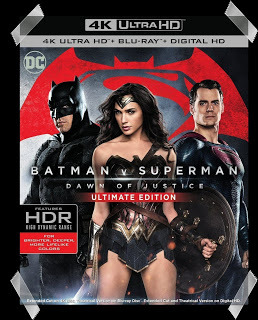 The ultimate edition of Batman v Superman: Dawn of Justice is available to buy on 4K UHD Blu-ray, with today’s cheapest retailer being
Base
, who have it listed for £18.29 inclusive of delivery.
The ultimate edition of Batman v Superman: Dawn of Justice is available to buy on 4K UHD Blu-ray, with today’s cheapest retailer being
Base
, who have it listed for £18.29 inclusive of delivery. The set also includes the theatrical cut of the movie and bonus material on a standard 1080p Blu-ray. As the ultimate edition is now widely regarded as the definitive version, I’d rather have that cut in 4K than the theatrical, though both cuts in 4K wouldn’t have been too much to ask for the RRP.
I should add that the quality of the ultimate edition is demo-worthy - this is not a “fake” 2K upscale like the Kelvin Timeline Star Trek movies, but real 4K. Even if, like me, you zoom into 16:9 to watch it, thus softening the image, the visuals remain breathtaking and the pulsating soundscape is every bit their match.
Published on February 16, 2019 13:38
February 2, 2019
Blu-ray Review | Star Trek: The Next Generation - Season Two
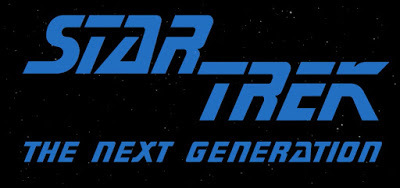 Having languished on a yellowing piece of folded-up A4 for more than six years, this review has had by far the longest gestation period of any that I’ve ever written. There’s no particular reason for such an exorbitant delay – like George R R Martin, I’m just a slow writer who’s easily sidetracked. But, having recently had my love for
Star Trek
reignited, and particularly having revisited Season 2 of
Star Trek: The Next Generation
(“TNG”) hot on the heels of an eye-opening few hours at the Destination Trek convention in Birmingham, I’ve decided to finally finish this, the first of many half-completed projects plastered about the small cupboard-like space that I can call my own (well, mostly - the cat’s litter tray lurks three feet from my chair, constantly threatening a shower of wood pellets).
Having languished on a yellowing piece of folded-up A4 for more than six years, this review has had by far the longest gestation period of any that I’ve ever written. There’s no particular reason for such an exorbitant delay – like George R R Martin, I’m just a slow writer who’s easily sidetracked. But, having recently had my love for
Star Trek
reignited, and particularly having revisited Season 2 of
Star Trek: The Next Generation
(“TNG”) hot on the heels of an eye-opening few hours at the Destination Trek convention in Birmingham, I’ve decided to finally finish this, the first of many half-completed projects plastered about the small cupboard-like space that I can call my own (well, mostly - the cat’s litter tray lurks three feet from my chair, constantly threatening a shower of wood pellets).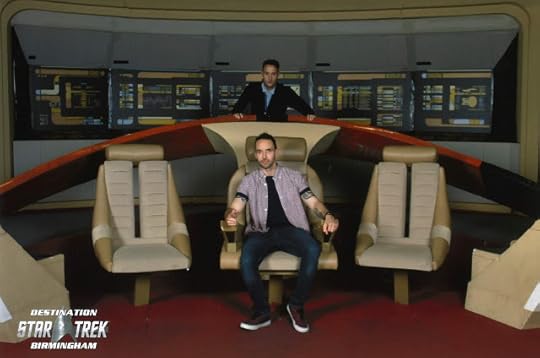
If TNG’s first season is the uncomfortable running in of a new warp engine, then its second is steady warp-five cruising with the occasional blast of warp nine. Still a show teeming with the original series’ (“TOS”) sensibilities, repurposed ideas (and this year, whole scripts too), and even a clip show that would shame The Simpsons, TNG’s second season would bring it to the brink of the groundbreaking character drama that would lift its next four seasons onto a pedestal. Here, key players assume their positions. Unstoppable foes are revealed. The stage is set for Michael Piller and his new writing staff.
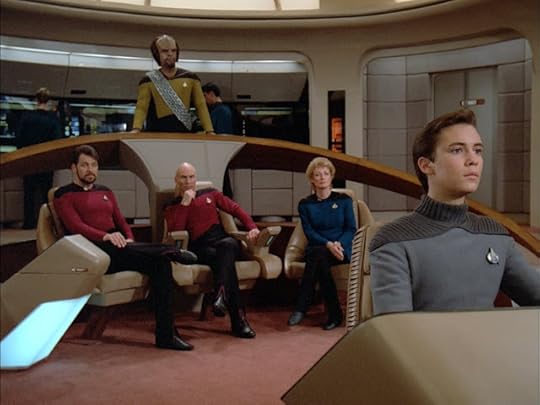
When we meet the crew again in “The Child”, things have changed significantly. Dr Crusher has left to become the head of Starfleet Medical, leaving her teenage son aboard to continue his studies. The second pip on Geordi La Forge’s collar has been filled in with gold to match the colour of his new uniform, as after an inexplicable precession of bit-part chief engineers in the first season, the Enterprise-D finally gets its resident Scotty. Even more significant is the elevation of “Big, dumb, stupid Worf” to chief of security - a role so suited to his Klingon background that it’s incredible he didn’t start the show in it. And there are new faces too - one of them, a Hollywood star. Having been inspired by Nichelle Nichols’ role in TOS, Whoopie Goldberg requested a birth aboard the Enterprise-D, and would soon find herself there, serving as not only an exotic bartender, but also everything else from adolescent agony aunt to captain’s confidante.
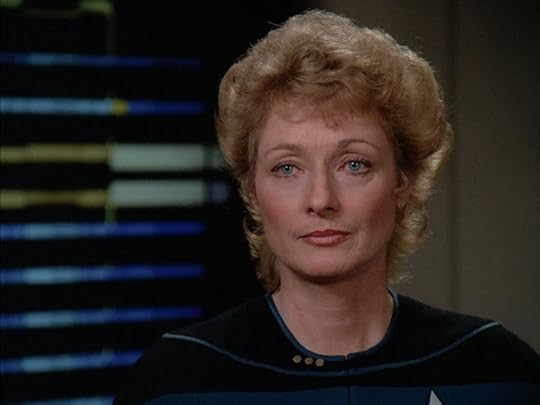
In the same vein, the ship’s new doctor would find herself playing a role that revolved as much around character tension as it would medical matters. In a sharp contrast to the coquettish Dr Crusher, former two-time TOS doctor Diana Muldaur would spend much of her time trying to put Data and Picard in their places with a hard edge and dry humour reminiscent of Bones’s. This might not have been what the writers originally had in mind for Dr Pulaski, but it certainly helped to promote the feeling of family upon which the show would build its success. It also helped that not every one of her patients died in her care - Beverly Crusher’s first-season mortality rates were shocking for someone soon to be promoted to the lofty position of head of Starfleet Medical. Not that Pulaski’s diligence would be enough to earn Muldaur a spot on the opening credits...

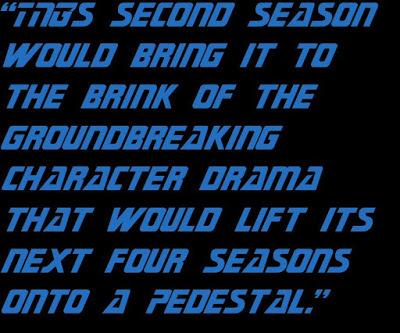 In the Blu-ray’s new two-part documentary, Making it So: Continuing the Next Generation, Family Guy creator Seth McFarlane speaks about how the show began to “casualise” the science fiction genre in its second year (something that he has since taken to the extreme in his own series, The Orville) and in doing so he cuts right to the heart of what makes TNG so appealing. Unlike its predecessors, the Enterprise-D isn’t just a fantastic platform upon which modern morality plays can be staged. It’s a plausible home; a community where abandoned boy geniuses still fret over teenage metamorphic girls and hardened divorcée doctors take no greater pleasure than pulling rank on their commanding officers when it comes to medical matters.
In the Blu-ray’s new two-part documentary, Making it So: Continuing the Next Generation, Family Guy creator Seth McFarlane speaks about how the show began to “casualise” the science fiction genre in its second year (something that he has since taken to the extreme in his own series, The Orville) and in doing so he cuts right to the heart of what makes TNG so appealing. Unlike its predecessors, the Enterprise-D isn’t just a fantastic platform upon which modern morality plays can be staged. It’s a plausible home; a community where abandoned boy geniuses still fret over teenage metamorphic girls and hardened divorcée doctors take no greater pleasure than pulling rank on their commanding officers when it comes to medical matters.
Despite the run’s shaky bookends, which were borne of a writers’ strike at one end and a shortage of funds at the other, Season 2 does contain half a dozen world-beating episodes; a dozen or so good ones; and a small number that still don’t quite measure up to later seasons. Even these, though, aren’t the write-offs that the first season’s many flops were. “Where Silence Has Lease”, for example, is plagued by a surfeit of logical holes, but saved by moments of real finesse. Picard’s candid musings on the mysteries of existence in that episode offer a far more reasonable summation of humanity’s place in the universe than any religion or philosophy that I know of. “The Royale”, meanwhile, borders on the absurd, but is saved by the wry comic performances of Brent Spiner and particularly Michael Dorn, whose blunt reply to the “human female” asking if the away team require room service still tickles me today. Classic Worf. Even the inexcusably frivolous and borderline offensive “Samaritan Snare” is saved by a superbly written and charmingly played little subplot that sees Captain Picard open up to Wesley Crusher about his heart problem and the folly that led him to it.
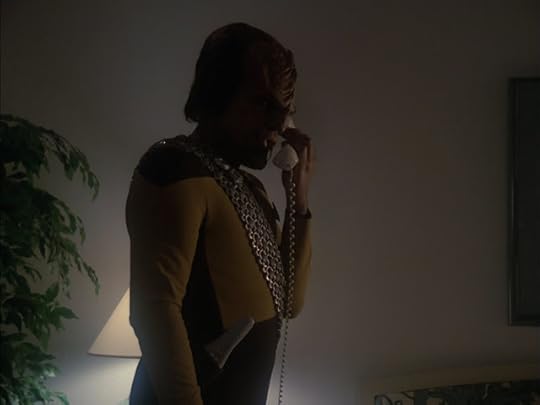
And the season’s standout episodes are up there amongst the series’ finest, if not the franchise’s. From the action and intrigue of the explosive space opera “Contagion” to the unsettling sci-fi horror of “Time Squared” and thought-provoking courtroom drama of “The Measure of a Man”, Season 2 is not afraid to take chances with the format and the characters. Melinda M Snodgrass’ episode is an especially good example of TNG’s increasing confidence as it deals with a moral issue that is perhaps more complex than any ever tackled by Gene Roddenberry in TOS, and this is reflected in its hesitant outcome, which manages to successfully close the story without succumbing to the black-and-white sermonising of many a Kirk wrap-up. For me, this makes the 24th century a much more fascinating place than the 23rd as it is depicted in TOS.
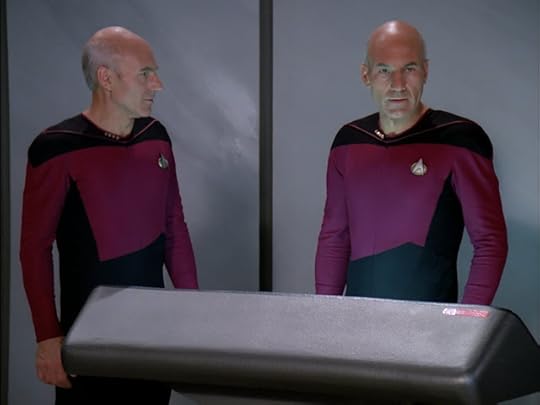
One surprising highlight of the season is its obligatory holodeck episode, “Elementary, Dear Data”, which pits Data’s Sherlock Holmes against a holographic Moriarty who suddenly finds himself vested with consciousness. Daniel Davis does a terrific job of gradually softening the infamous criminal mastermind as sentience dawns and he grows beyond his programming (laying the groundwork for Star Trek: Voyager ’s emergency medical hologram’s long-running quest for rights and recognition), but what’s especially arresting about the episode is that, much like “The Measure of a Man”, it’s brave enough to recognise that certain ethical quandaries do not have a perfect solution – at least, not one that’s immediately apparent. The episode’s close is criticised by many as a cop-out, but to me it’s exactly the opposite – an admission that, for all their brilliance, the crew of the Enterprise-D have their limitations.
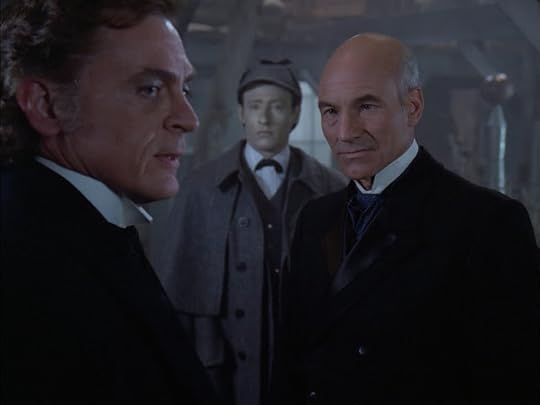
Such limitations are brought into sharp focus by Maurice Hurley’s “Q Who?”, a deeply unsettling adventure that brings in a new big bad to finally put the series on the map. Undoubtedly the eeriest of all the franchise’s Borg episodes, “Q Who?” has a haunting, lonely sense to it that makes for exceptionally disturbing viewing, even today. Flung across the galaxy by Q, who’s intent on humbling the “arrogant” Picard, the Enterprise-D crew find themselves completely out of their depth in the path of a race unlike anything that they’ve ever encountered before.
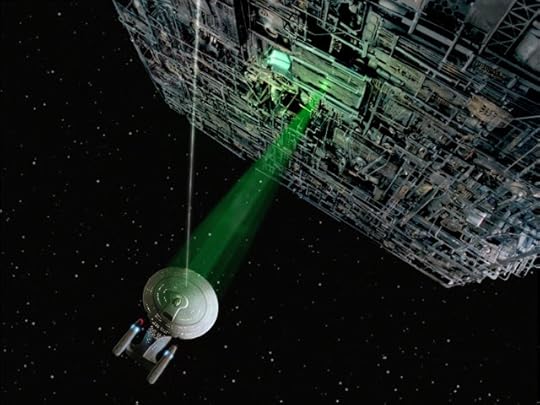
With their colossal, cubic ships and hive mind, the Borg are an immediately overwhelming presence. What makes them truly terrifying though is their apathy - the Borg Collective isn’t evil, but dispassionate. It beams drones aboard the Enterprise-D not to threaten or cajole, but to hack into the main computer. It slices up the ship up just to learn about it, blithely slaughtering dozens of crew members in the process. Even without a clear interest in assimilating individuals, which would be introduced a year or so later to devastating effect, the Borg instantly elevate the series.
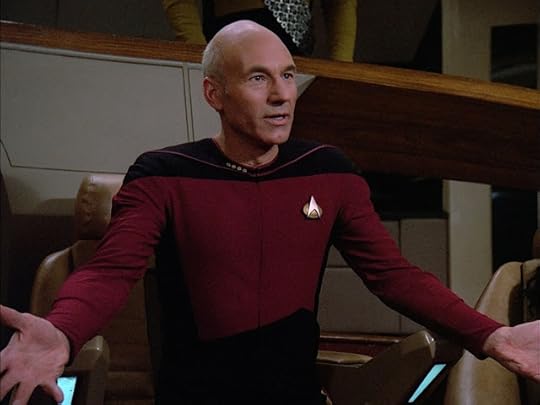
“Q Who?” also underlines this budding conception that the Enterprise-D crew, and even her captain, are not infallible. Q may have been the one to pull the trigger here, but it is Picard’s hubris that leads his ship into its premature showdown with the Borg. As such, all the horrors that would follow it are as much on Picard as his omnipotent antagonist. And, as Patrick Stewart’s furrowed brow and cracking voice make plain, the captain knows it. In HD you can almost see him sweat.
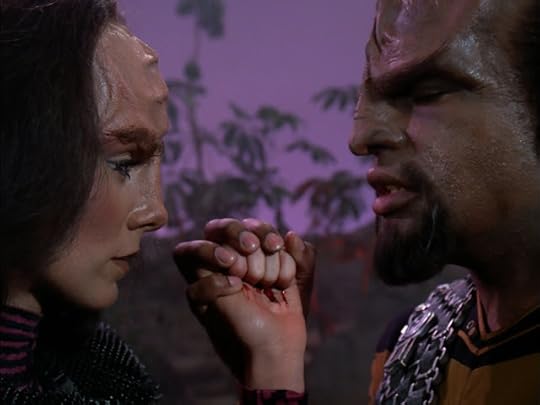
These days, “Q Who?” would have been the season finale – Discovery ending on a stand-alone episode, let alone a clip show is unthinkable – but Season 2 marched on past it regardless with fluff the likes of “Up the Long Ladder” and “Manhunt”, as well as hidden gems like “The Emissary”, which starts Worf down the long, format-shattering arc that would continue throughout TNG and into Star Trek: Deep Space Nine . The season nonetheless ends on a whimper; albeit a whimper retrospectively made bearable by the knowledge that better is to come.
As with the first season’s release, the audio and visual quality of the presentation is outstanding. The show’s spruced-up sets and fresh carpets dazzle and the uniform colours pop even more brightly than in Season 1, no doubt enhanced by the better quality film stock from which these HD transfers were taken. The sound is especially good, even on the quieter bottle shows which you wouldn’t necessarily expect to be impressed. The ubiquitous rumble of the ship’s engines – a sound now as synonymous with meditation and sleep apps as it is TNG – is always audible, yet dialogue remains crisp and small details like turbolift doors and combadges are always perfectly positioned. All round, it’s a triumph.
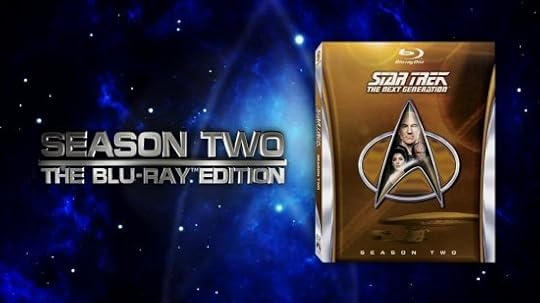
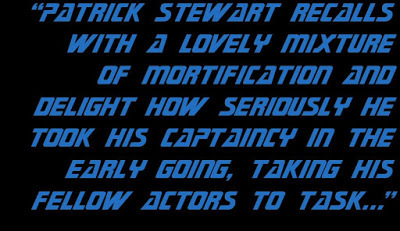 The bonus material also improves upon that which accompanied Season 1, boasting arguably the whole range’s flagship feature, Reunification: 25 Years After The Next Generation. Often hilarious and sometimes surprisingly stirring, this hour-long programme sees the entire principal cast reunite to discuss their time spent making the series. Removed from production by a quarter of a century, they all speak with the sort of candour that you’ll rarely find in a contemporaneous behind-the-scenes piece. Patrick Stewart recalls with a lovely mixture of mortification and delight how seriously he took his captaincy in the early going, taking his fellow actors to task when they mucked about on set and even calling a meeting to tell them all, “It isn’t good enough!”
The bonus material also improves upon that which accompanied Season 1, boasting arguably the whole range’s flagship feature, Reunification: 25 Years After The Next Generation. Often hilarious and sometimes surprisingly stirring, this hour-long programme sees the entire principal cast reunite to discuss their time spent making the series. Removed from production by a quarter of a century, they all speak with the sort of candour that you’ll rarely find in a contemporaneous behind-the-scenes piece. Patrick Stewart recalls with a lovely mixture of mortification and delight how seriously he took his captaincy in the early going, taking his fellow actors to task when they mucked about on set and even calling a meeting to tell them all, “It isn’t good enough!”  “Twenty-five years in the Royal Shakespeare Company for this!”
“Twenty-five years in the Royal Shakespeare Company for this!”Fortunately for his fellow actors, Stewart eventually came around to the idea that fun “oiled the wheels of the schedule,” though to hear them all speak of their fears of first-season cancellation and then second-season sackings (following the outspoken Gates McFadden’s firing), it sounds like it took them a few years to reach that comfortable place. However, whilst it’s fair to say that the actors do not pull their punches when they discuss the more unpleasant aspects of working on the series, the cast’s reunification might well have been the actual crew’s, such is the strength of their evident bond. It’s clearly with great pride and fondness that these eight distinguished performers look back on their time on TNG – and their time with each other.

Despite being an instalment shorter than the previous season’s retrospective, Making it So: Continuing the Next Generation only clocks it at around ten minutes less when taken as a whole. Whilst there isn’t quite as much to cover as last time, the show’s second season was nothing if not tumultuous. TNG show already had three strikes against it – it was sci-fi, it was syndicated, it was a sequel – and going into its difficult second year, hopes weren’t high for its survival. Yet the writers’ strike was weathered thanks to some deft repurposing of old Star Trek: Phase II scripts. Beverly Crusher’s absence, and the abrupt end that it brought to her ongoing relationships with her son Wesley and Captain Picard, was turned to the show’s advantage as young Ensign Crusher had to find his feet without his mother, and her commanding officer had to deal with a doctor who’d sooner throttle him than make eyes at him. Better still, a darling of the box office would unexpectedly throw her oversized purple hat into the mix, increasing the series’ profile in the public eye as well as lifting the quality of the production as a whole. Whoopi Goldberg makes “The Dauphin” almost watchable. She makes “Q Who?” transcendent.
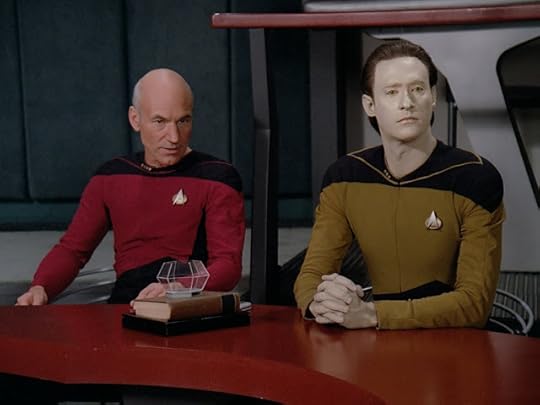
Another remarkable new offering is a special extended version of “The Measure of a Man” that Robert Lederman cut together with the existing film using original videotape rushes retained by the writer. Make no mistake, this is far from being another Wrath of Khan job where you’re trying to work out exactly where they’ve squeezed in the three minutes of elusive additional material; this extended episode runs to 57:35 – that’s around thirteen minutes longer than the transmitted episode. Of course, it’s apparent in a few places why certain elements were consigned to the cutting room floor, but overall the quality is such that most of the cuts seem to have been made simply to get the episode down to time.
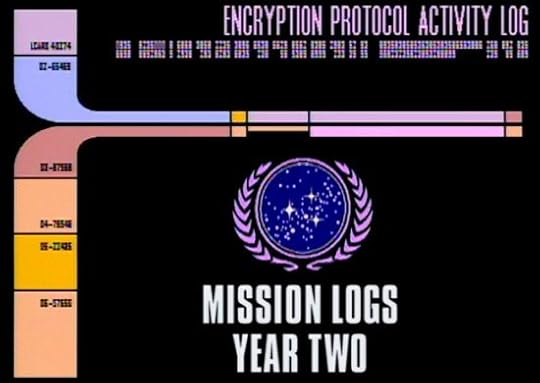
Spread across the discs in the set are also all the Mission Logs included on the 2002 DVD release, about an hour and a half’s worth in all, along with the original episodic trailers for all twenty-two episodes and some rare deleted scenes from “The Icarus Factor” and “Up the Long Ladder”. This material is all presented in standard-definition, which in the case of the deleted scenes is a little odd, as later sets present their offerings in full HD, but this time around the obligatory gag reel is in full HD. Rounding out the collection are a tech update looking at the HD remastering of Season 2 - essentially a continuation of the fascinating Energized! featurette – and a couple of short features in which LeVar Burton champions reading across decades and across media.

Season 2 of TNG was certainly a troubled season, but a promising one, and at least until the 17K holodeck edition of the series drops, this Blu-ray collection is by far the best way to experience it. Back when I started writing this review, and it was selling for the better part of forty quid, I would have strongly recommended adding this title to your collection – now that most places are flogging it for about a fiver, it’s an absolute must.
The Star Trek: The Next Generation – Season Two Blu-ray is still available to buy, with today’s cheapest retailer being Base who have it listed for just £6.19 with free delivery. Alternatively, the Full Journey Blu-ray box set, which includes all seven seasons (but omits the separately released TV movies and their bonus material) is still available. Amazon are currently cheapest at £64.99 with free delivery, but if you are in no rush to buy, it’s worth bearing in mind that the price often drops to almost half that.
The season’s remastered HD episodes are currently streaming on Netflix, and digital copies are available to buy from both iTunes and Amazon Instant Video for £2.49 each or £39.99 for the whole season. The Blu-ray’s bonus material is exclusive to the physical release.
Published on February 02, 2019 15:11
E.G. Wolverson's Blog
- E.G. Wolverson's profile
- 52 followers
E.G. Wolverson isn't a Goodreads Author
(yet),
but they
do have a blog,
so here are some recent posts imported from
their feed.



